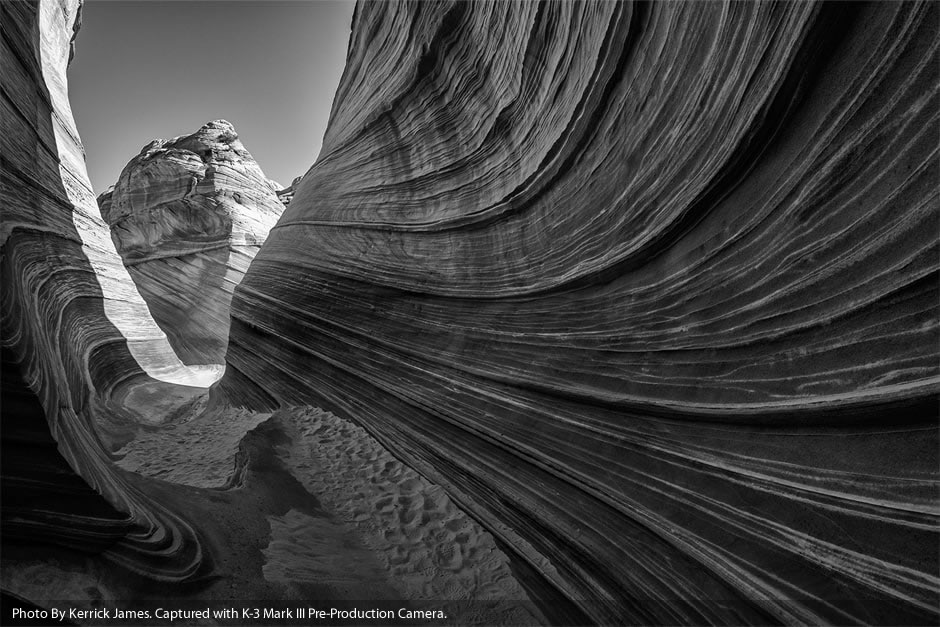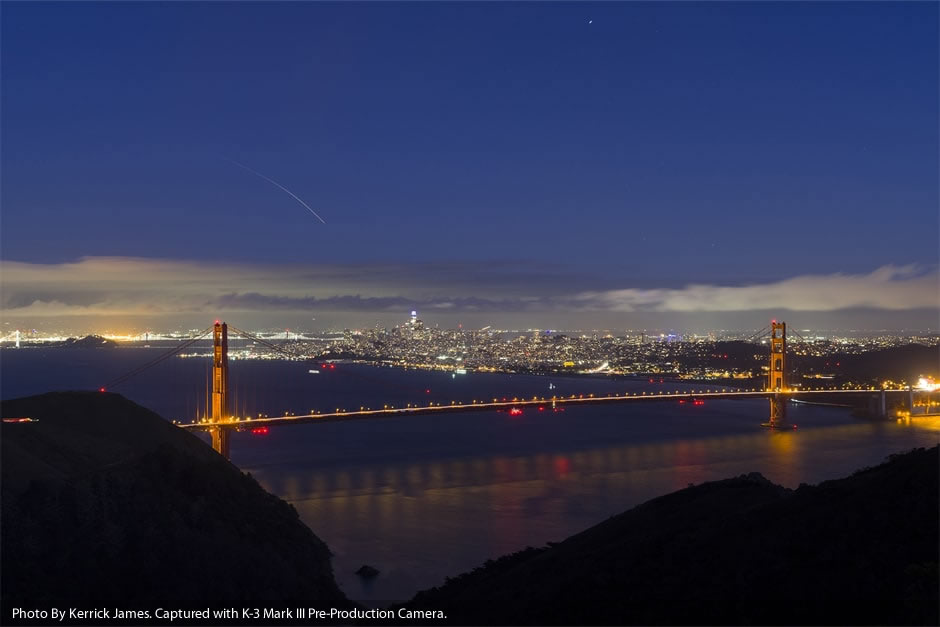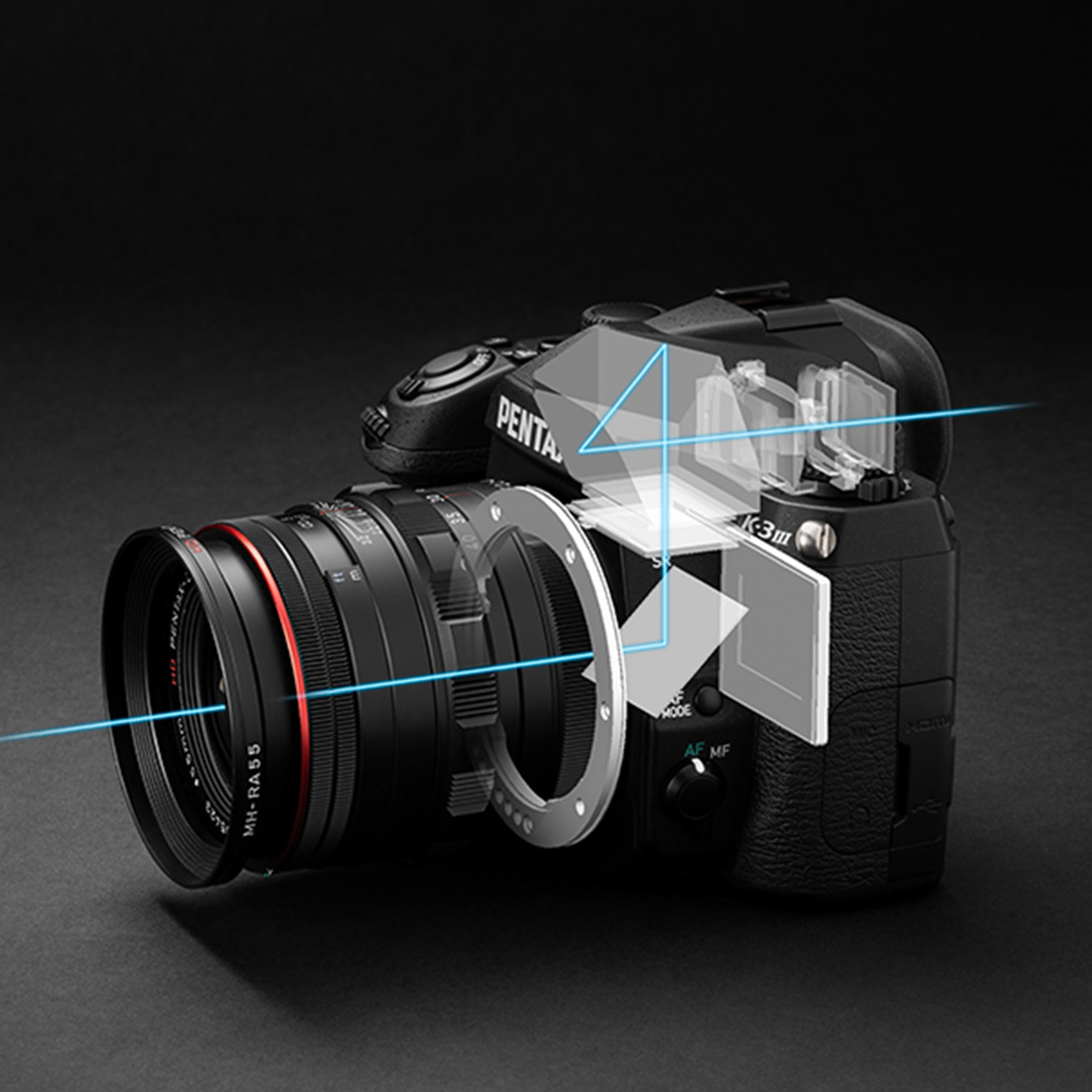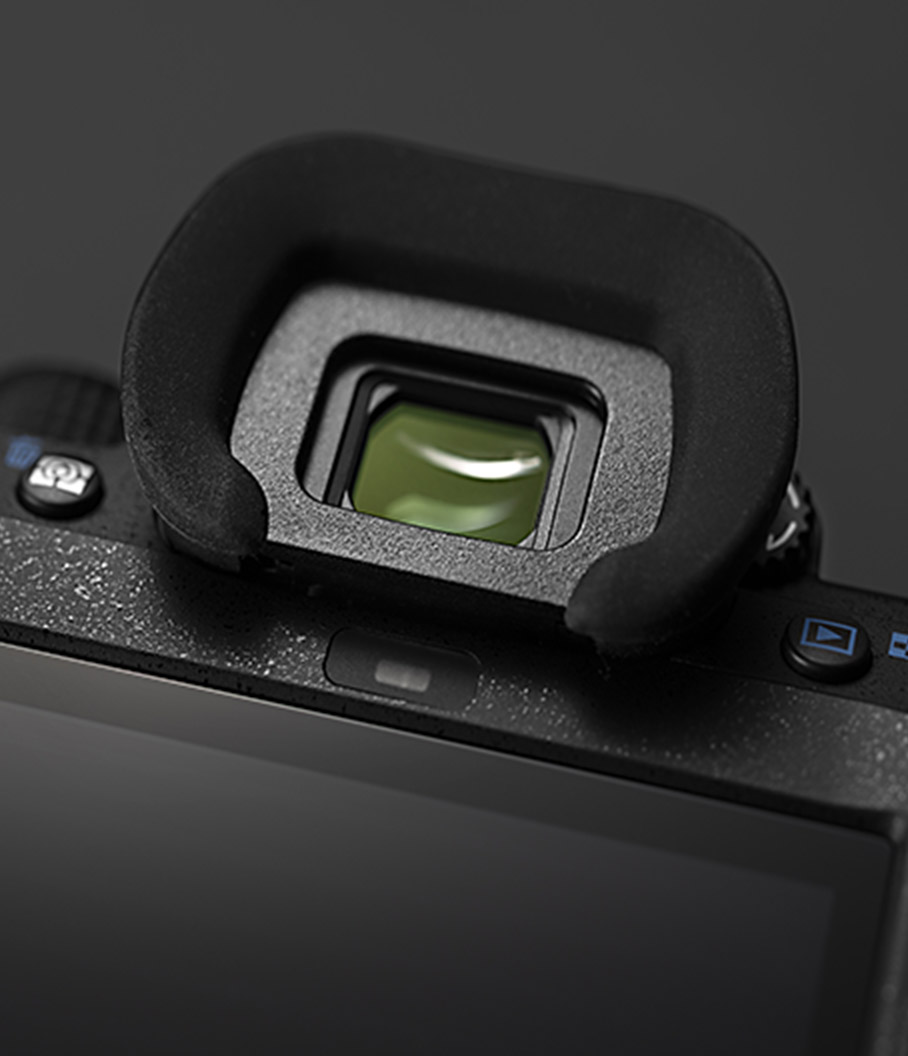
PENTAX believes in the future of SLR photography.
As the pioneer of SLR cameras in Japan, PENTAX has devoted all its assets — its philosophy, technologies and passion — to the development of this remarkable camera.
The PENTAX K-3 Mark III: the new flagship of the APS-C-format SLR lineup.
Take a picture.
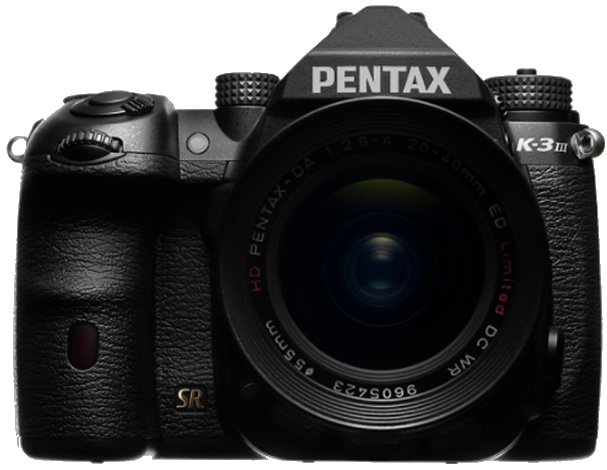
Sample Gallery

High-performance viewfinder
Optical viewfinder with approx. 100% field of view, and approx. 1.05X magnification
The PENTAX K-3 Mark III features a high-performance viewfinder with a high-refraction glass pentaprism to provide approximately 1.05-times magnification (with an FA 50mm F1.4 lens set at infinity). Despite the compact, lightweight APS-C-format SLR body, it delivers a truthful, wide-view image equal to that of a full-frame SLR, and helps you to become more fully immersed in the photo-shooting process.
This viewfinder also provides an almost 10-percent increase in brightness, thanks to the improved reflectance of the pentaprism, while also assuring a nearly 100-percent field of view. By incorporating a distortion-compensating optical element and optimizing the lens coatings, it provides natural, true-to-life image rendition with high-magnification observations.
Optimizing the sense of immersion in the photo shooting process
Since the viewfinder eyepiece is designed to protrude from the LCD viewfinder display screen — to prevent your nose from contacting the camera body — you can look into the viewfinder more naturally and comfortably.
The eyepiece also features an eye sensor, which turns the monitor off the moment you bring your eye up to the eyepiece ring. This prevents the status screen’s illumination from affecting visibility during shooting, while allowing you to capture images more comfortably.
Optimizing the ease of operation
The PENTAX K-3 Mark III features a transparent LCD viewfinder display that provides a broader range of data in the viewfinder window. Because you can adjust the camera’s settings without taking your eye away from the viewfinder, you can concentrate more fully on the subject.
The camera also allows you to program the desired combination of display data, such as grid pattern and AF focus point, making it easier to swiftly change settings for a specific scene or subject.
Viewfinder Screen
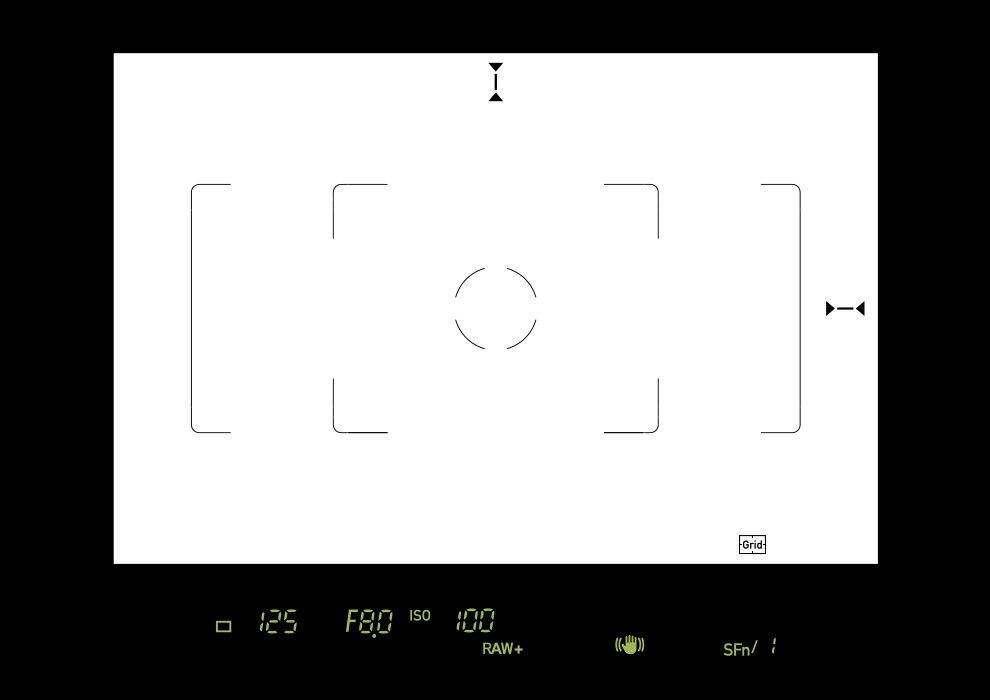
Current Display Pattern [F1]
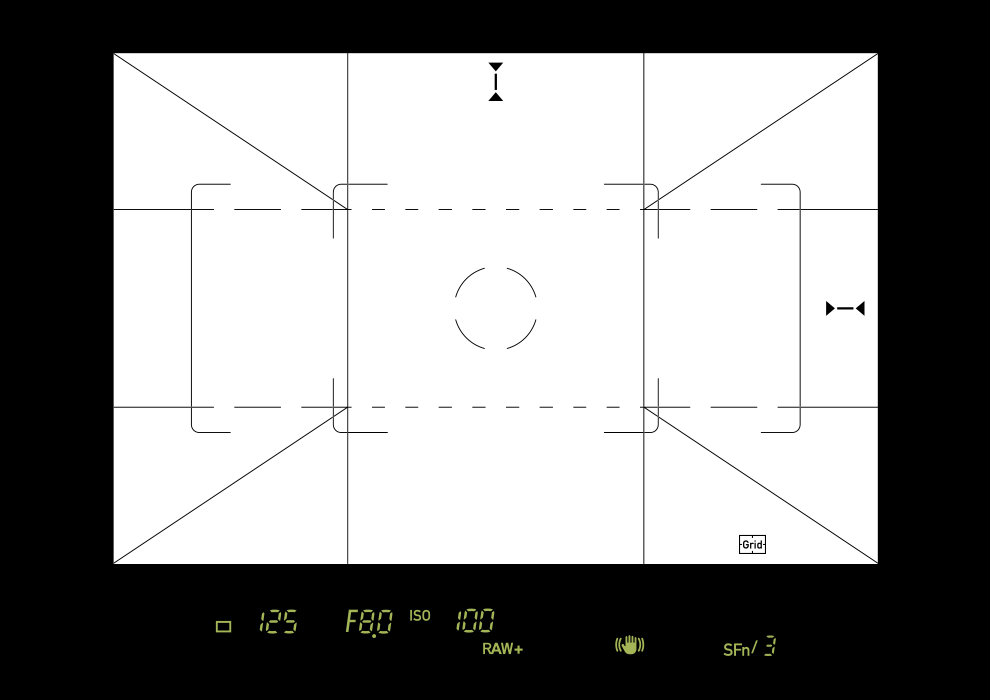
Current Display Pattern [F3]
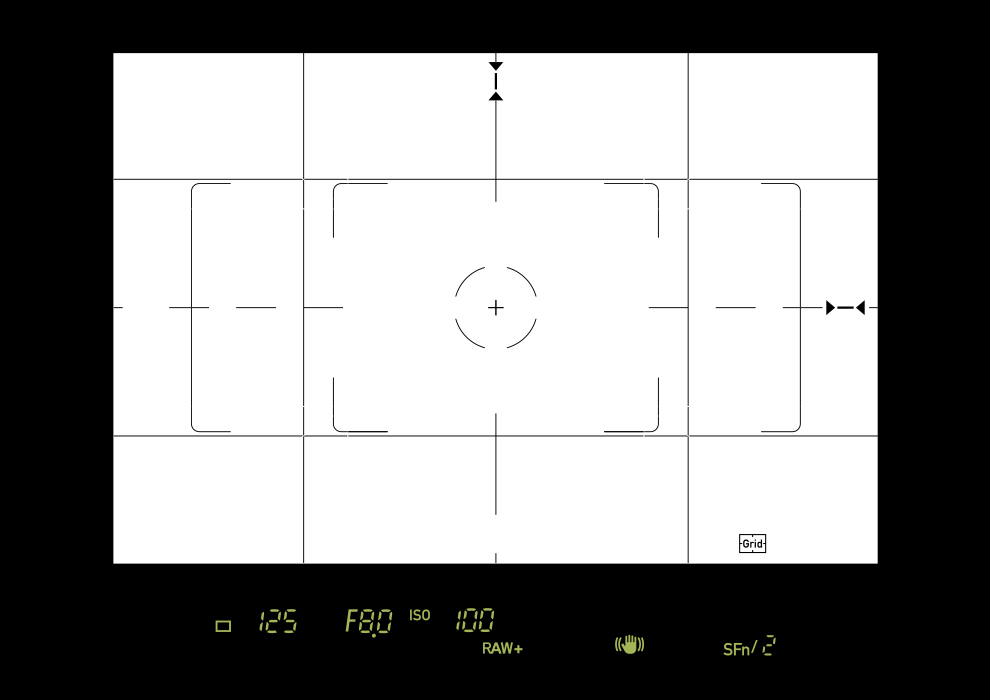
Current Display Pattern [F2]
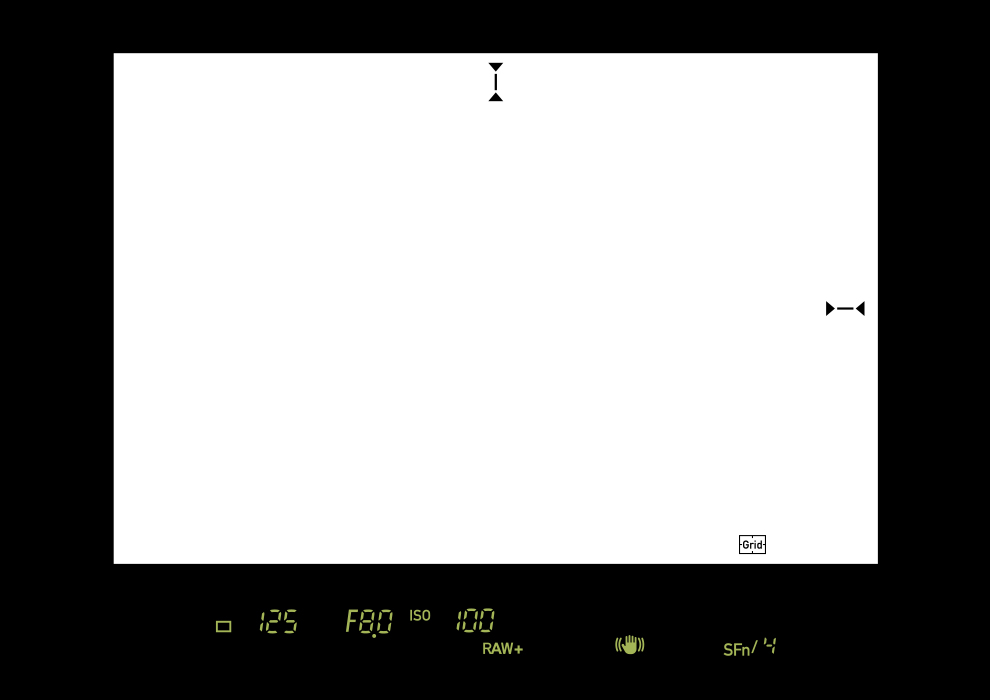
Current Display Pattern [F4]
Operability that affects sensibility
Pleasant shutter action
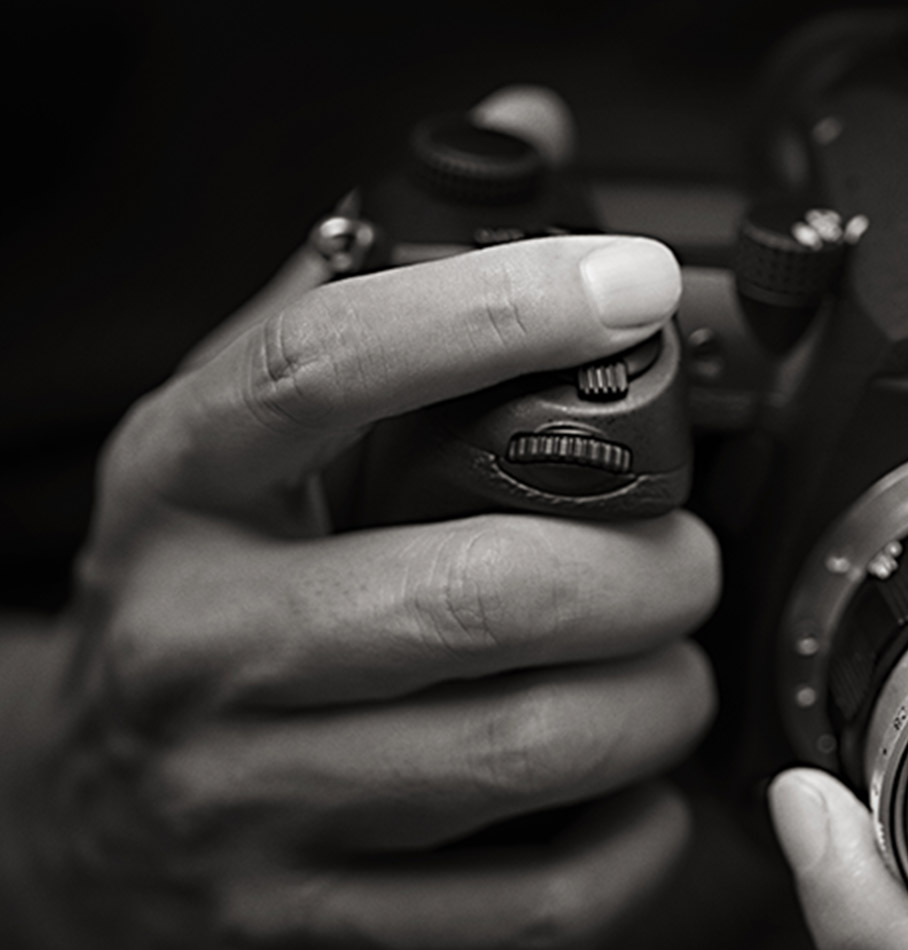
The PENTAX K-3 Mark III features a leaf switch, a mechanism previously used in the PENTAX 645Z and PENTAX K-1. Compared to the tactile switch more commonly used in compact SLR cameras, the leaf switch provides a lighter, smoother shutter action and minimizes the camera shake caused by the shutter-release action. It also helps you by providing effortless hold-down of the shutter-release button during continuous shooting.
The time lag between the shutter release and an image capture has also been reduced, compared to the PENTAX K-3 II, while the camera’s mirror- and shutter-driving mechanisms have also been upgraded. By reducing unwanted mechanical actions such as mirror bounce, it provides crisp, pleasant shutter-release action. You can feel the smooth action and speedy response every time you press the shutter-release button.
Ergonomic design for responsive camera operation
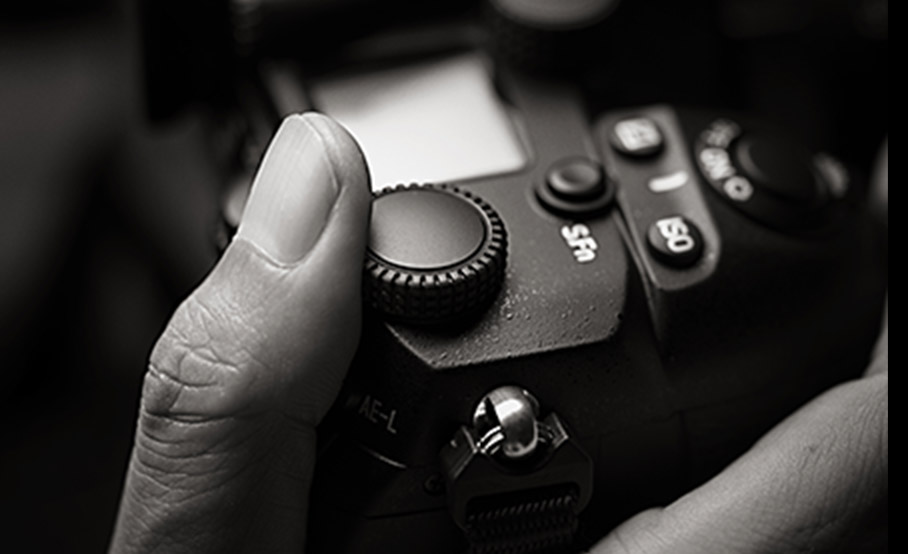
For comfortable shooting and easy carrying, the PENTAX K-3 Mark III’s grip and control-button layout have been optimized to accommodate different hand sizes and finger lengths. Perfected after producing a series of mock-ups and conducting repeated verifications, they let you to concentrate completely on your photo shooting.
New-generation Hyper Operation system
The conventional Hyper Operation system allows you to instantly shift the AE mode to Tv (Shutter-priority) or Av (Aperture-priority) when the camera’s exposure mode is set to P (Program). The PENTAX K-3 Mark III’s new-generation Hyper Operation system provides more flexible exposure-mode control, by adding a new Advanced mode* to the conventional Standard mode.
*The Standard mode is set as default. The Advanced mode is a customizable option.
More versatile Smart Function
The PENTAX-original Smart Function provides easy, single-action selection of menu items and functions.
Featuring a new Smart Function button, the PENTAX K-3 Mark III now lets you preprogram a maximum of five functions from 22 options, and displays a list of the selected functions in the viewfinder window, so you can select the desired function without removing your eye from the viewfinder. It even lets you select and program the desired values for each function, allowing you to more precisely customize this function to meet your preferences.
Customization of control buttons
Featuring 10 customizable control buttons positioned around its body, the PENTAX K-3 Mark III allows you to assign the desired function from 29 options to each of them. Thanks to this customized camera operation, you are guaranteed to have the same comfort and ease of operation as with your current camera.
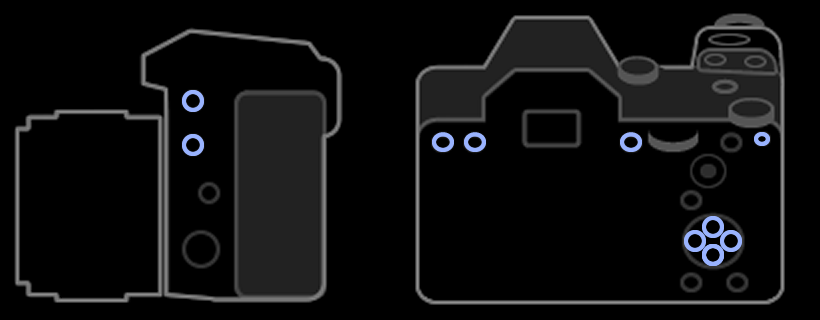
Customization of electronic dials
The PENTAX K-3 Mark III lets you customize the functions of the front/rear electronic dials, Green button and Smart Function dial (when the Smart Function is assigned to one of the electronic dials). You can also set the functions separately based on the shooting format (still-image or video) or exposure mode.
You can even set the ISO button shift to the ISO Auto mode, or use the exposure compensation button to function as a reset button. Simply by assigning the desired function to each of these buttons, you can easily and freely customize camera operations.
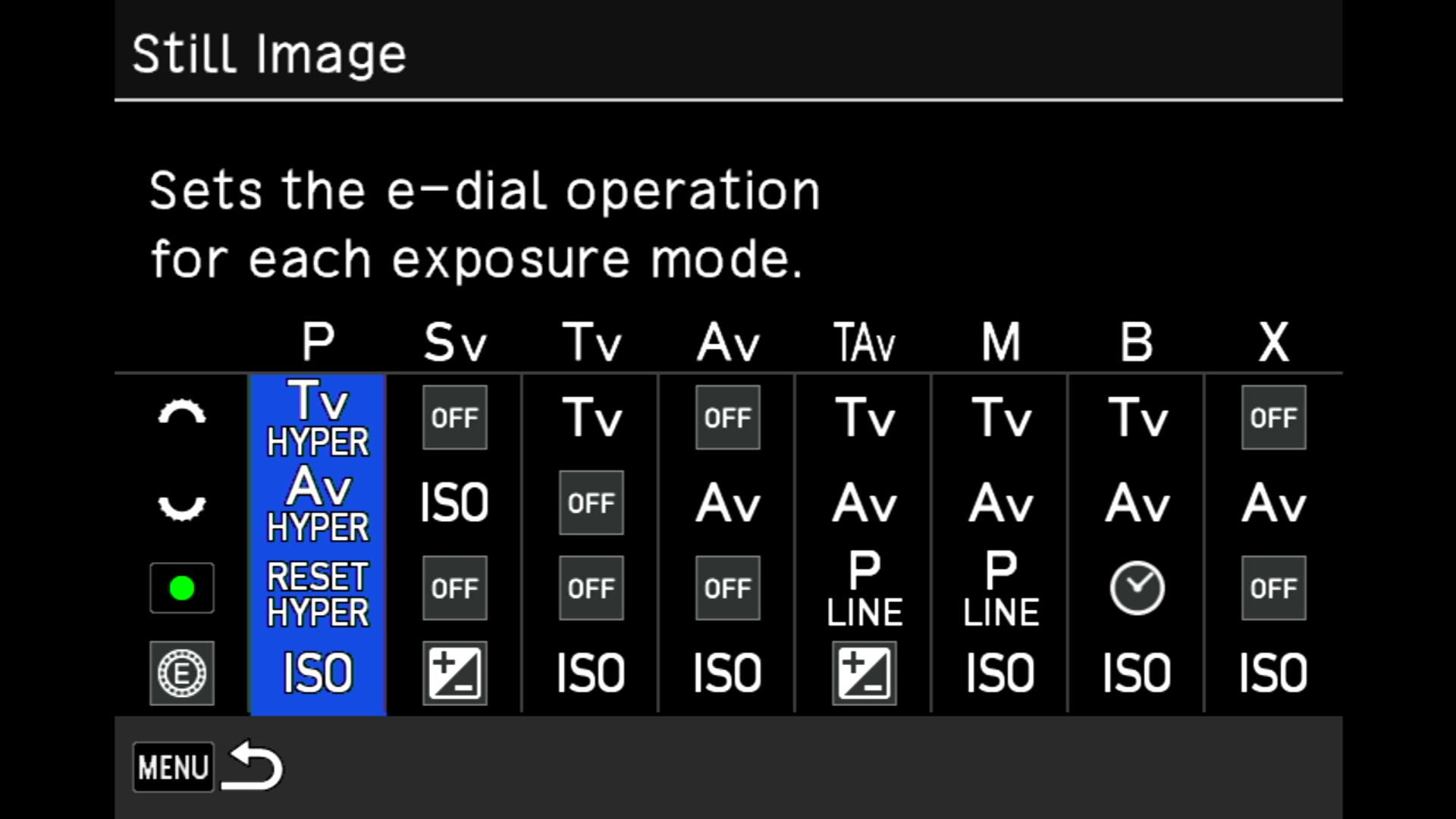 Selection of shooting mode |
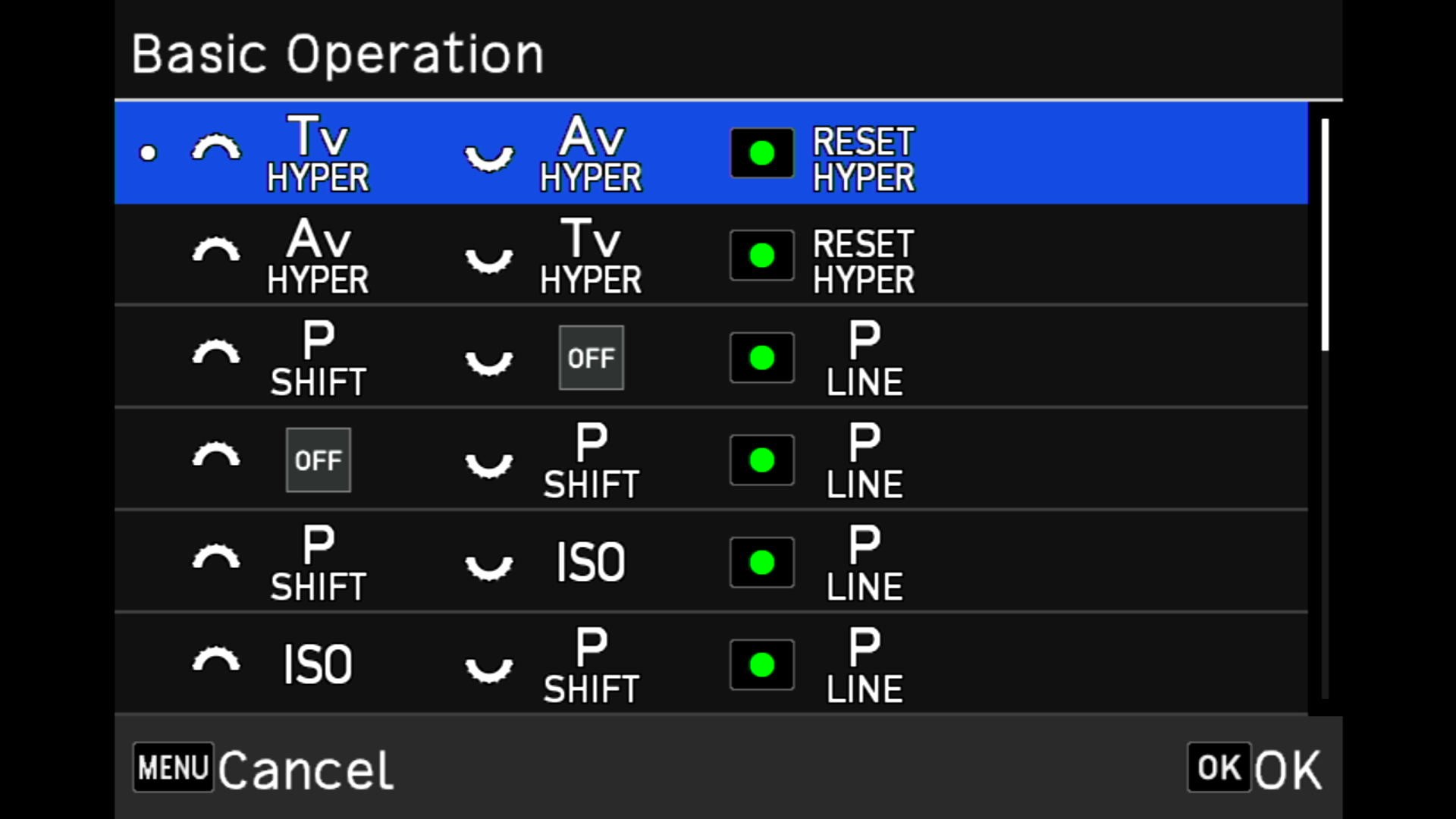 Customize basic operation setting |
Flexible operation with touch-screen control
The PENTAX K-3 Mark III features a large 3.2-inch LCD monitor with touch-screen control. By combining intuitive touch-screen control with the four-way controller and the front/rear electronic dials, it provides a new, user-friendly system that enhances speedy camera operation.
LCD panel
On the top panel, the PENTAX K-3 Mark III features a second LCD panel, which provides easy confirmation of the functions and settings selected for the Smart Function, in addition to providing basic data such as exposure and drive-mode settings.
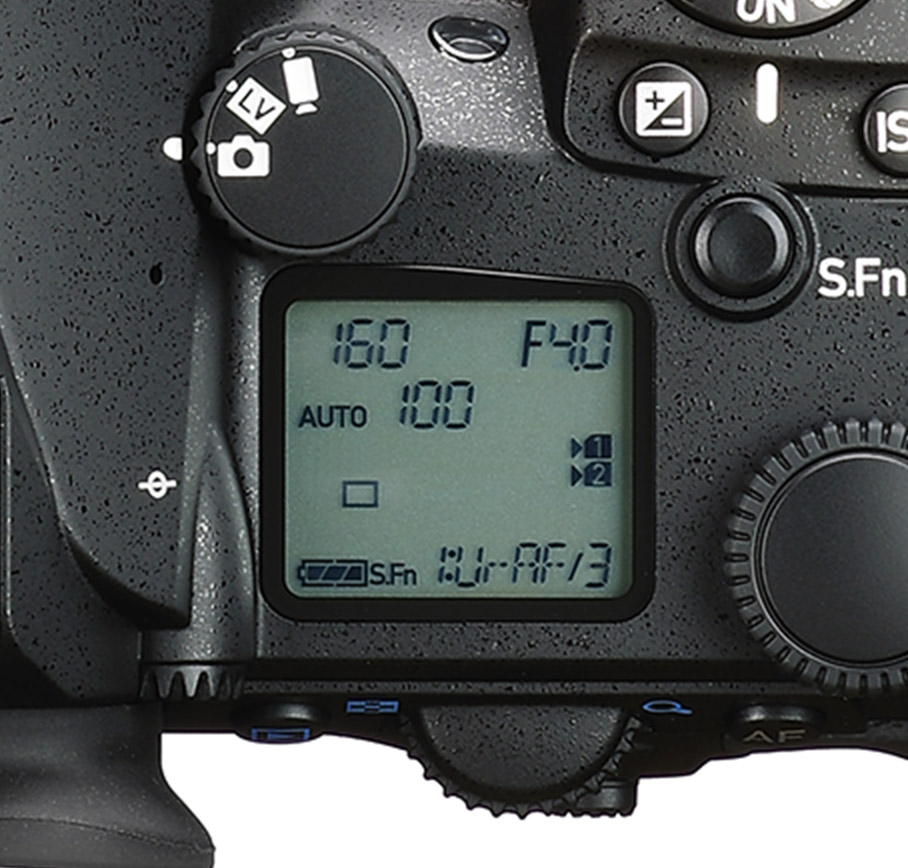
Compatibility with classic lenses
You must be aware that each of your classic and cherished lenses creates its own distinctive ambience in captured images. That’s why the PENTAX K-3 Mark III has been designed to accommodate classic lenses. The camera not only saves the aperture value as Exif data when you set a desired aperture using the electronic dial, but also lets you measure the light and capture images at closed-down aperture. It even accommodates the TAv mode.*
It also provides more segmented setting of the lens’s focal length in SR (Shake Reduction) shooting.
*The PENTAX K-3 Mark III allows AE photography at the closed-down aperture for M-series lenses and lenses that previously could be used only in open-aperture shooting.
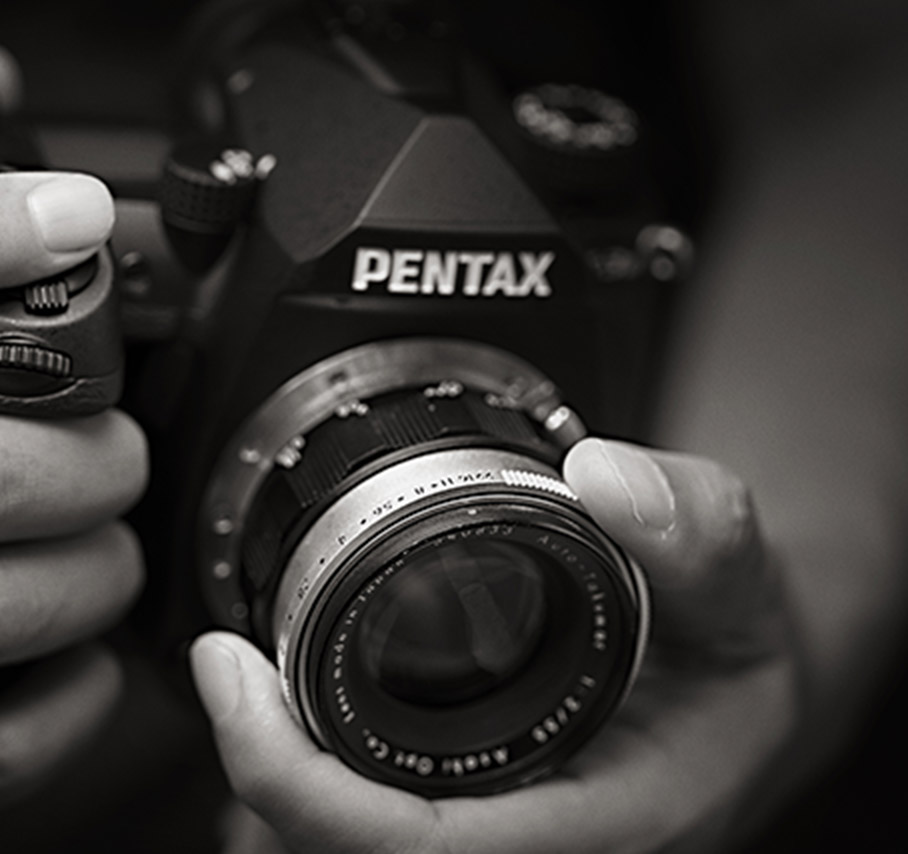
Manual input of lens focal length
When required to manually input the focal length of a lens for SR operation, the PENTAX K-3 Mark III allows you to select a desired length from the history log, in addition to the preprogrammed ones, to minimize the time and trouble required for manual setting.
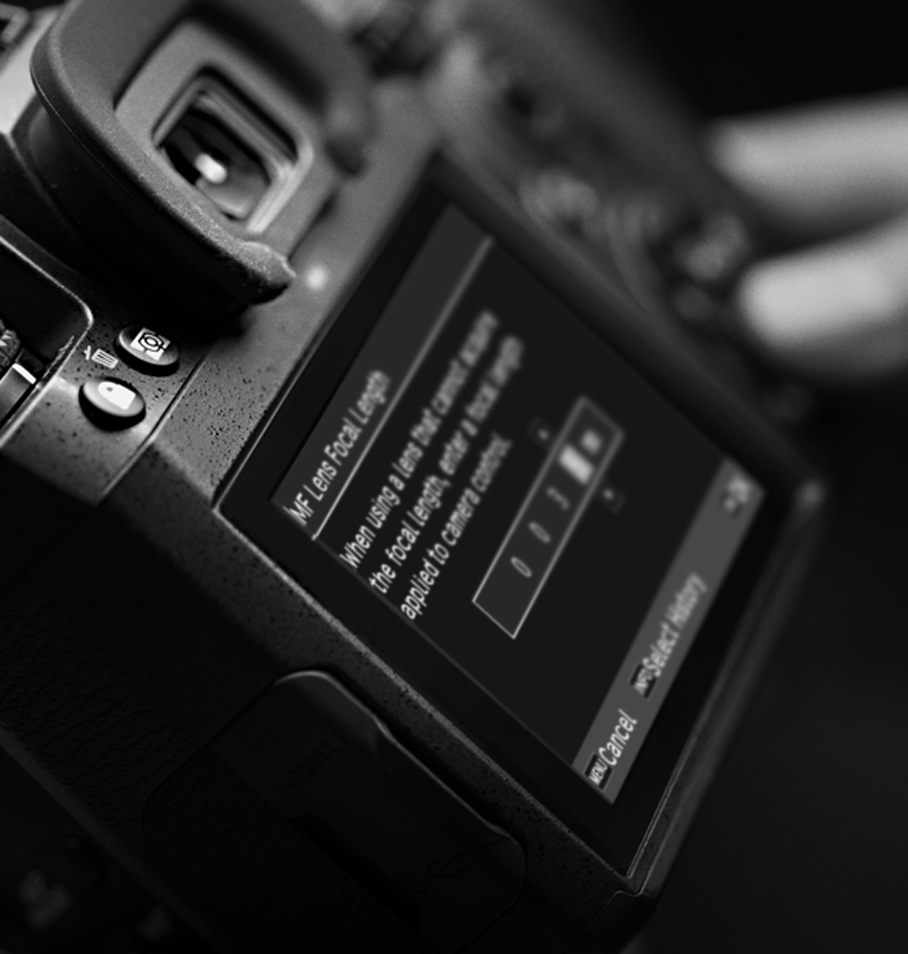
High-speed drive, with a maximum speed of approximately 12 images per second
Thanks to the combination of a newly developed mirror and shutter driving unit and the high-speed, high-performance PRIME V imaging engine, the PENTAX K-3 Mark III provides a high-speed drive system with a maximum speed of approximately 12 images per second in the AF.S mode, or approximately 11 images per second in the AF.C mode.
This system lets you capture a momentary expression of the subject, which couldn’t otherwise have been captured by previous models.
*The continuous shooting speed may decrease depending on the type of lens used and/or the aperture, shutter speed and sensitivity selected by the user.
*A certain amount of time is required for the playback of images captured in the continuous shooting mode. The time required may vary depending on the number of captured images and/or the recording format.
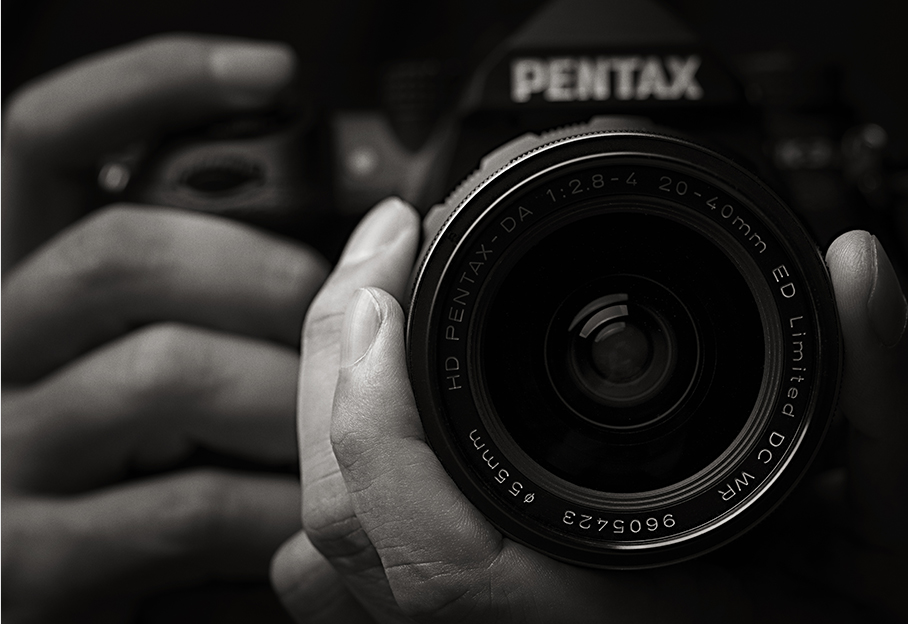
High-speed, high-precision mirror and shutter driving unit
To improve driving speed during continuous shooting and upgrade the performance of AF and AE systems, the PENTAX K-3 Mark III features a new mirror and shutter driving unit to greatly reduce the time needed to drive the mirror and shutter mechanisms. By minimizing the effect of mirror bounce, it also helps increase the camera’s driving speed, while securing sufficient time for distance and light measurements. As the result, the operation time required to capture a single image has been reduced to about two-thirds of the PENTAX K-3 II.
Approach 1:
Highly dependable, responsive coreless motors are installed to drive the mirror and shutter mechanisms. Light sensors monitor the position of the cam gears driven by these motors with great precision, assuring more accurate control of the drive and stop points of these mechanisms during high-speed continuous shooting.
Approach 2:
The weight of the entire main mirror unit has been reduced to minimize collision energy, while a new damper mechanism instantly stops the mirror action to reduce mirror bounce.
The sub-mirror’s drive and stop mechanism also features a new design to optimize mirror action and reduce mirror bounce.
SAFOX 13 AF system with 101 focus points
The number of focus points in the PENTAX K-3 Mark III have been increased to 101, from 27 in the PENTAX K-3 II. The AF area also has been greatly expanded. Of 41 user-selectable points,* 25 are cross-type sensors. This high-density AF system enhances the flexibility of image composition, while optimizing focusing accuracy on the subject. Since its middle focus point is designed to detect an F2.8 luminance flux, the camera assures super-high-precision focusing when using a bright lens with an open aperture of F2.8 or larger.
*The number of selectable points may vary depending on the mounted lens.
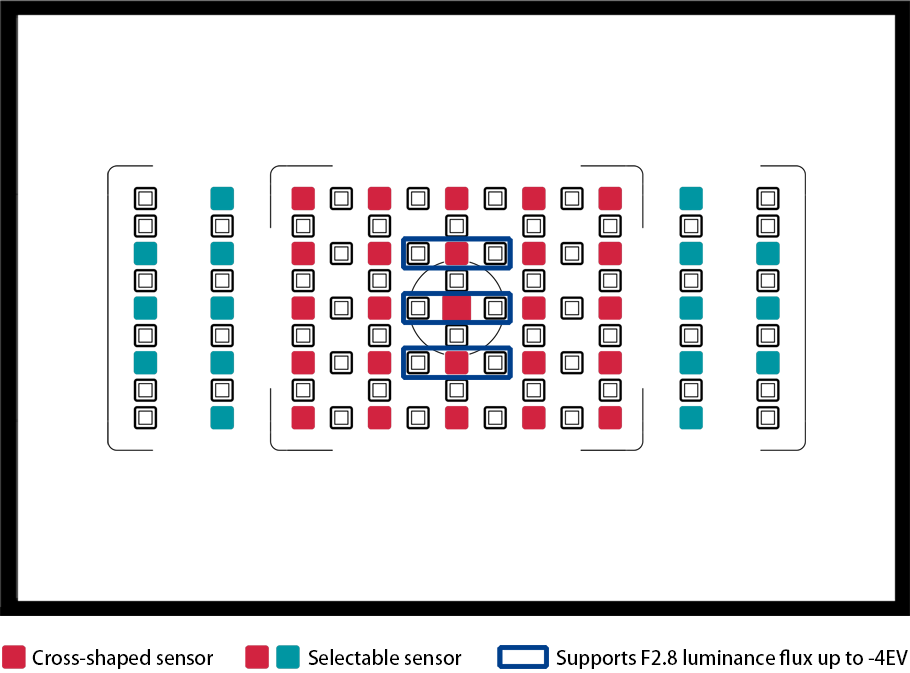
AF area selection
The PENTAX K-3 Mark III provides a choice of the AF area from Auto Area, Zone Select, Select, Expanded Select Area (S, M or L), Select (S) and Spot. A newly installed AF point selector lever makes it easier to intuitively select the optimum focus point. Since the camera displays the selected AF coverage area and the selected AF focus point in the viewfinder window, you can adjust the image composition and select the focus point simultaneously.
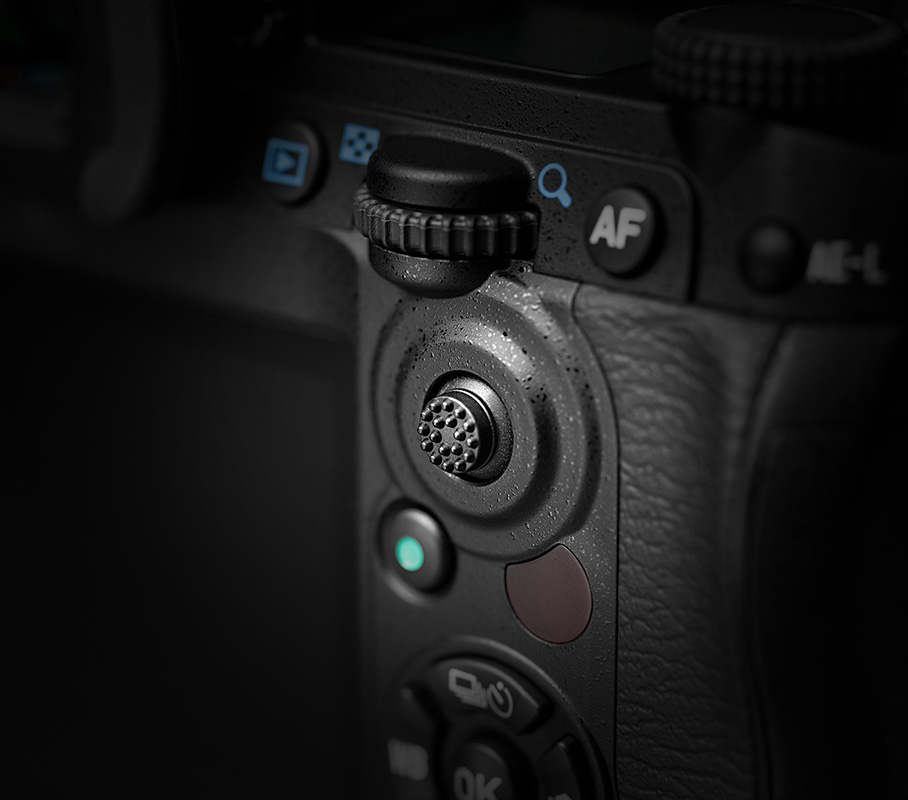
High-precision AF operation at -4EV illumination
Since the camera’s F2.8-sensitive light sensor operates even at -4EV illumination, it assures remarkable imaging power for dimly lit subjects when using a lens with an F2.8 luminance flux.
Outstanding image tracking performance
The camera features a new, high-capacity RGBIr image sensor with approximately 307,000 pixels, to provide more accurate tracking of subjects in motion or slight movement than previous models. It assures outstanding image tracking performance by correlating and assessing the data delivered by the tightly positioned AF focus points.
High-precision continuous shooting in AF.C mode
The camera’s continuous autofocus (AF.C) mode allows you to maintain sharp focus on a subject, regardless of direction of motion. An improved motion prediction algorism accurately detects the subject’s complex movement, which was rather difficult to predict with previous models. It also reduces the effect of the unstable motion speed and irregular stops and restarts, as well as the effect of obstacles.
SR II’s Panning mode
The camera’s in-body SR II mechanism provides an independent Panning mode. Thanks to the SR II’s improved operation, you can move the camera in a slow panning motion to capture distant, slow-moving subjects, whose motion was difficult to detect with conventional cameras. Since the camera allows you to switch the SR II’s mode between OFF and AUTO with a single push of the SR button, you can react quickly and effortlessly to a change of scene or subject.
New back-illuminated CMOS imaging sensor with approximately 25.7 megapixels
To further improve image quality, the PENTAX K-3 Mark III incorporates a newly adopted, back-illuminated imaging sensor with approximately 25.7 effective megapixels. It also features an AA (anti-aliasing)-filter-free design to faithfully reproduce the delicacy of light, or the fine outlines of a subject.
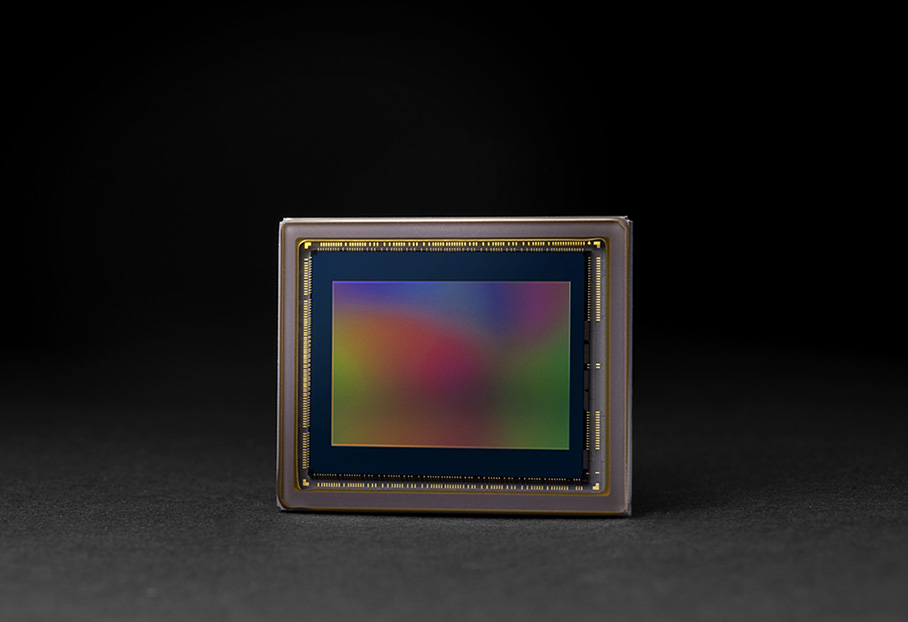
PRIME V imaging engine and second-generation accelerator unit
For the PENTAX K-3 Mark III, PENTAX developed the PRIME V imaging engine and the second-generation accelerator unit. This combination provides a harmony of flawless, high-speed operations and super-high-sensitivity, high-quality imaging, all at a level of performance higher than ever before.
The overall performance of the PENTAX Real-time Scene Analysis System and the autofocus system has also been much improved to ensure: flawless, high-speed operation; super-high-sensitivity, high-resolution imaging; better autofocus performance; and a broader range of shooting functions.
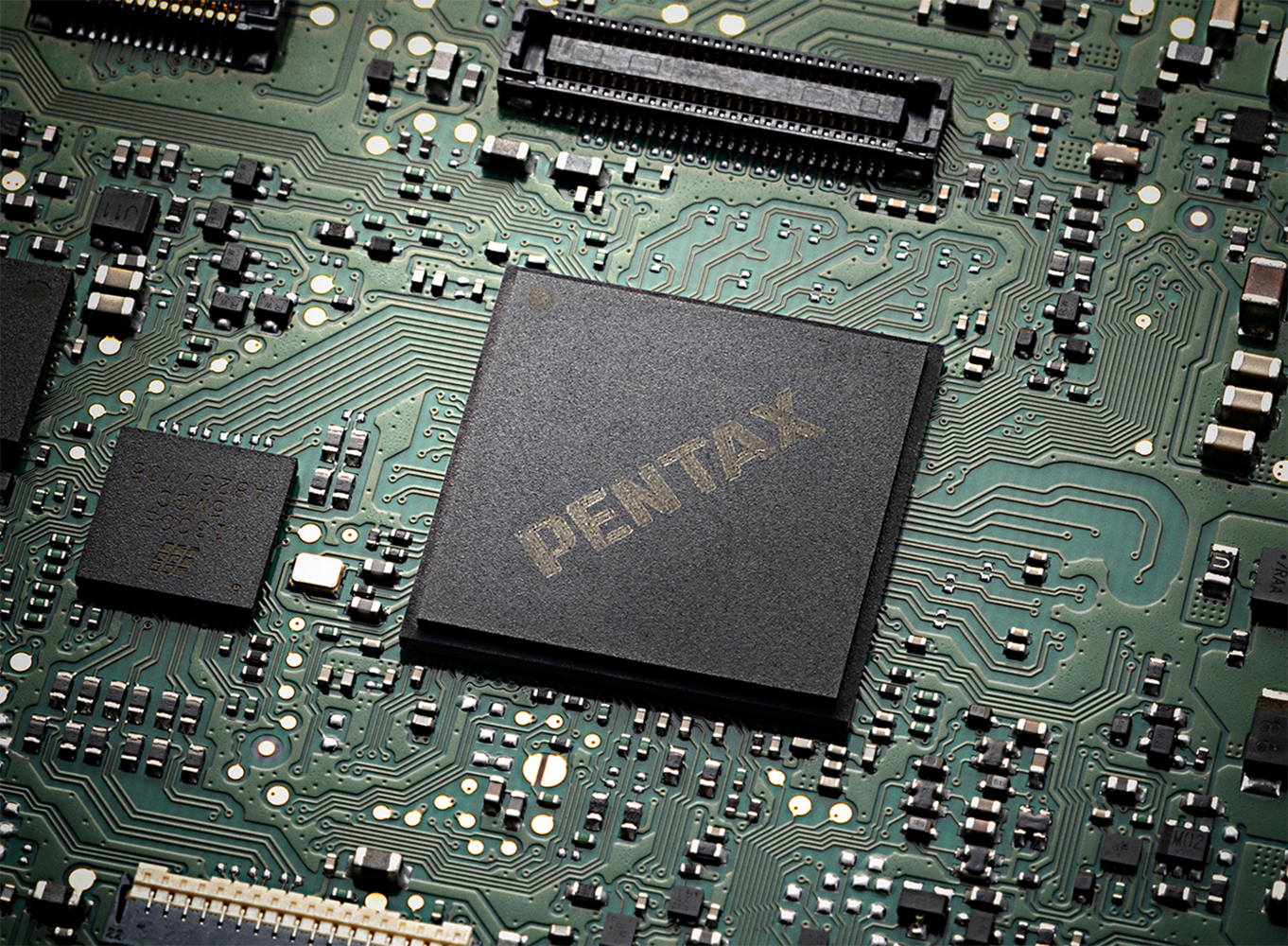
Superb imaging power over the entire sensitivity range
Thanks to its multi-dimensional image space filtering process, the PENTAX K-3 Mark III greatly reduces noise, while still retaining the subtle outlines of a subject. This advanced technology optimizes the camera’s resolving power, and faithfully reproduces the subject’s texture and detail.
It also improves image description in the lower sensitivity range, while minimizing unfaithful reproduction of blacks in the higher sensitivity range where color reproduction becomes more difficult. Even at the top sensitivity of ISO 1,600,000, it delivers a natural, well-defined image with a sharp subject outline and vivid colors.

New-generation Fine Sharpness function
Thanks to the incorporation of the new PRIME V imaging engine, the PENTAX K-3 Mark III features the much-improved Fine Sharpness function to more faithfully and finely reproduce the subject’s outline and detail.
Preset as a default setting, this function reproduces the subject’s details more naturally and sharply, while reducing the adverse effect of noise to a minimum.

The never-ending pursuit of high-quality imaging
With the renewal of the image sensor, imaging engine and accelerator, PENTAX has further enhanced the PENTAK K-3 Mark III’s image quality. This was based on PENTAX’s image design concept emphasizing the faithful reproduction of detail and texture.
Through repeated sensibility evaluations, PENTAX made great improvement in overall image quality, by efficiently controlling the camera’s noise-reduction process while paying the utmost attention to the total balance of captured images, with an emphasis on factors such as the natural reproduction of gradation and color.
PENTAX Real-time Scene Analysis System
This PENTAX-original system, which performs an in-depth analysis of each individual scene by assessing such factors as the brightness distribution over the image field and the subject’s shape, color and motion, has been greatly upgraded, thanks to the incorporation of a new RGBIr AE sensor with approximately 307,000 pixels, which detects the subject in greater detail than before.
Coupled with the state-of-the-art imaging engine, it performs accurate detection of the subject’s face and eyes in viewfinder shooting, along with high-precision tracking of moving subjects. Combined with an image recognition system adopting Deep Learning technology, it provides highly dependable exposure control and automatic selection of the optimal focus point.
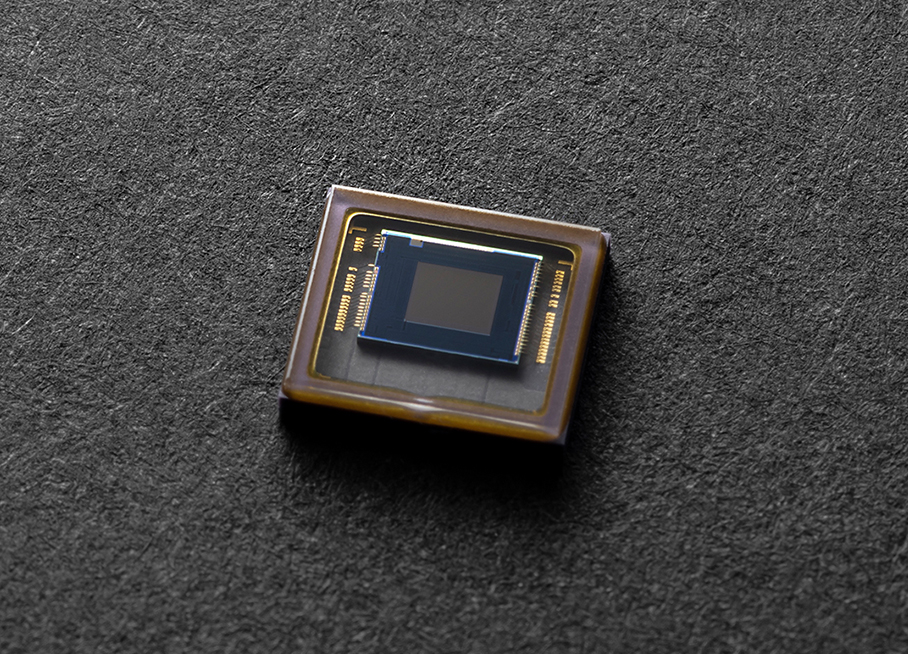
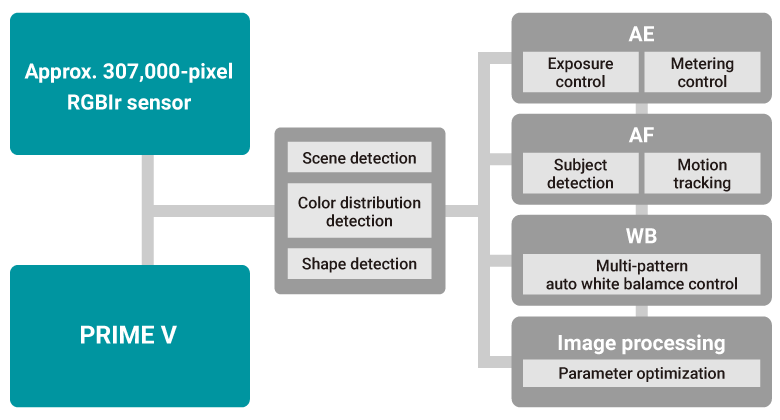
SRII for five-axis, 5.5-shutter-step camera shake compensation
The PENTAX K-3 Mark III’s SR II mechanism compensates for camera shake caused by horizontal and vertical shift, roll, pitch and yaw, with a wide compensation range up to approximately 5.5 shutter steps.*
In addition to the all-purpose Auto mode, this mechanism also provides a Panning mode to capture slow-moving subjects. You can choose the mode that provides the ideal compensation effect for your subject.
*In terms of the shutter speed used for still images: measured in conformity to CIPA standards, using an HD PENTAX-DA 16-85mmF3.5-5.6ED DC WR lens set at a focal length of 85mm.
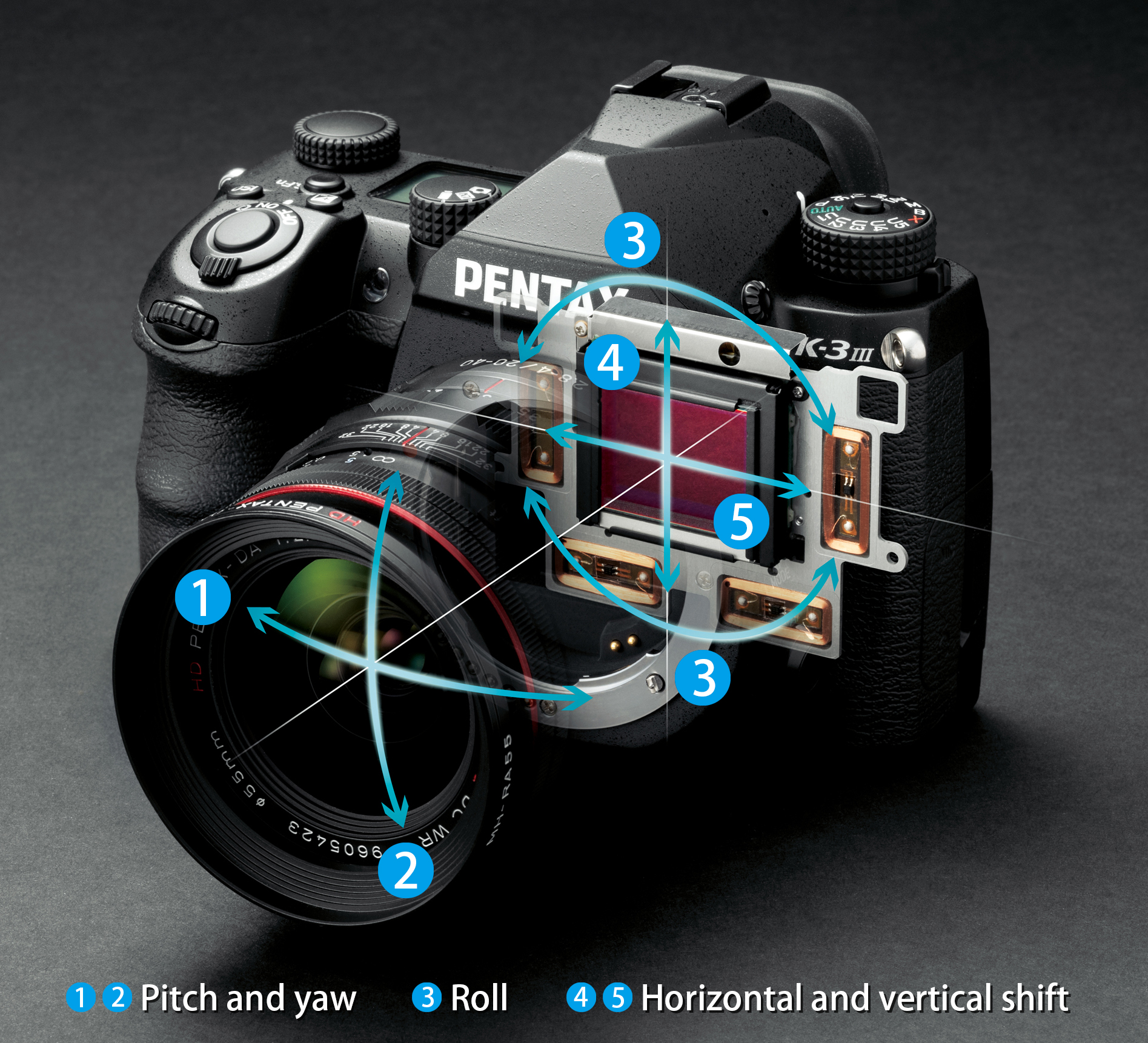
Pixel Shift Resolution System
By taking advantage of the SR II mechanism, this innovative system* captures four images of the same scene by slightly shifting the image sensor for each image to obtain all RGB color data for each pixel, then synthesizes them into a single, super-high-resolution composite image.
This assists the camera in producing super-high-resolution images with true-to-life colors free of false color or noises — something conventional cameras fail to deliver.
*When using this system, the user is advised to stabilize the camera firmly on a tripod during shooting.
AA (anti-aliasing) filter simulator
This PENTAX-original simulator* effectively minimizes moiré and false color by activating the SR II mechanism to apply microscopic vibrations to the image sensor during exposure. For ordinary shooting, you can turn this off to maximize the camera’s resolving power as delivered by its AA-filter-free design. Then you can activate it for certain scenes or subjects which require a filtering effect.
*This function works most effectively with a shutter speed of 1/1000 second or slower.
*This function cannot be used in some shooting modes, or when combined with certain functions.
Compact body
In developing the PENTAX K-3 Mark III, PENTAX focused especially on superb handling and easy carrying — the most prominent features associated with APS-C-format SLR cameras. While making many functional improvements over the PENTAX K-3 II, PENTAX kept the width and height at the same dimensions as the PENTAX K-3 II, while reducing the depth (the space between the lens mount and the LCD monitor surface) by approximately 2.5mm. This slim design allows for a greater protrusion of the viewfinder eyepiece to make image-viewing easier, while realizing PENTAX’s design concept of a compact body size and easy viewfinder photography.
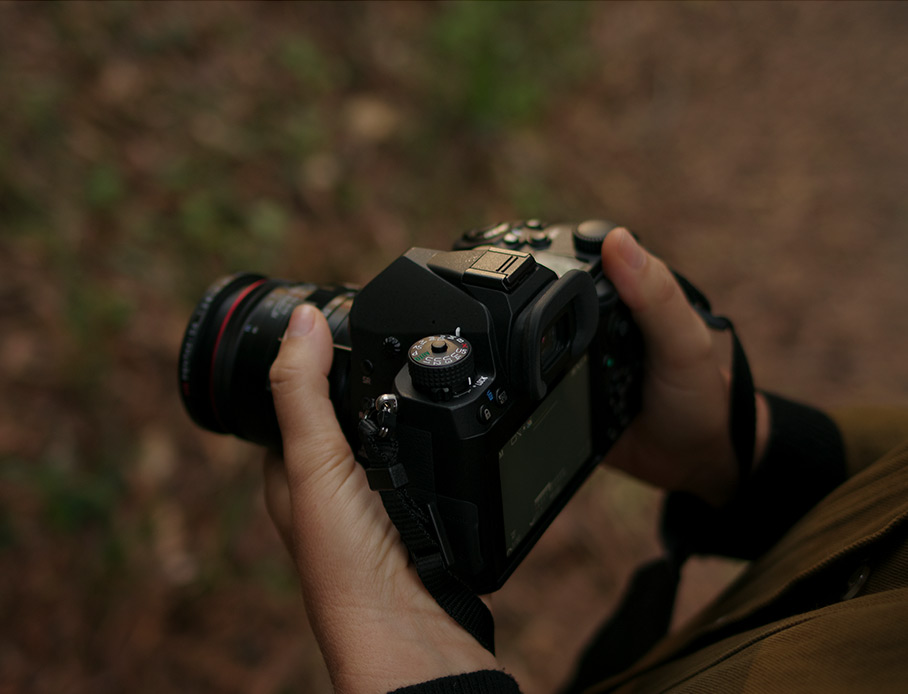
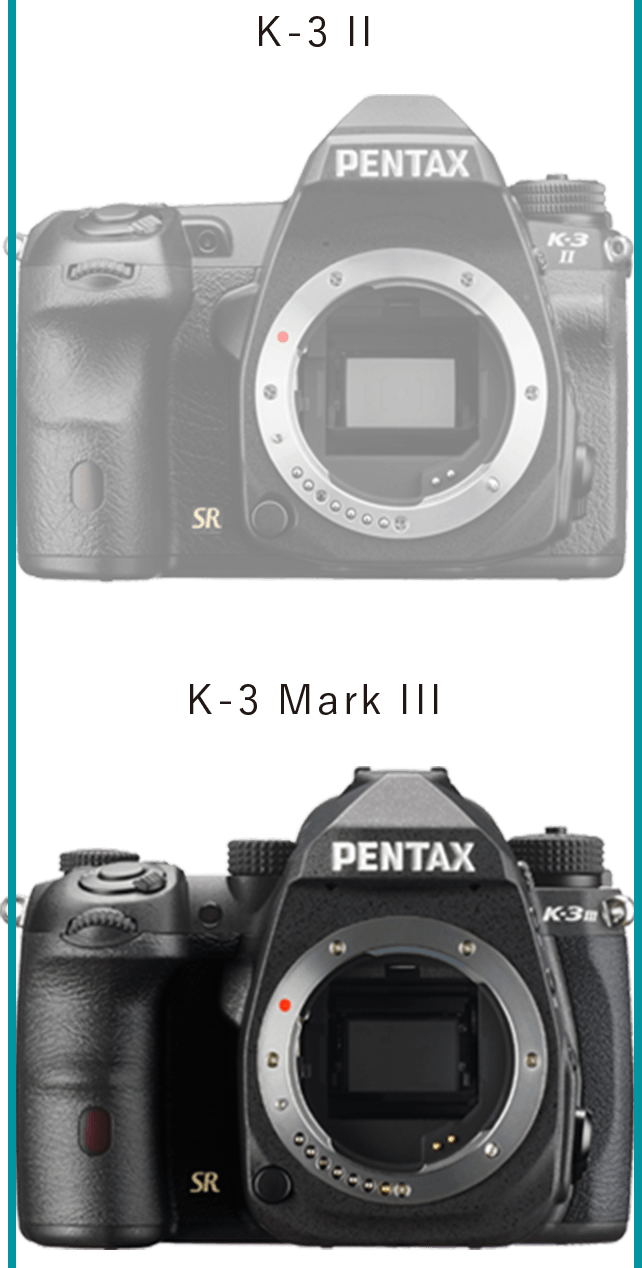
All-surface magnesium-alloy body
The PENTAX K-3 Mark III’s top, bottom, front and rear panels are all made of magnesium alloy. This lightweight, high-rigidity material not only protects the camera’s internal mechanisms from shock and vibration, but also creates the look of a solid, high-grade camera body.
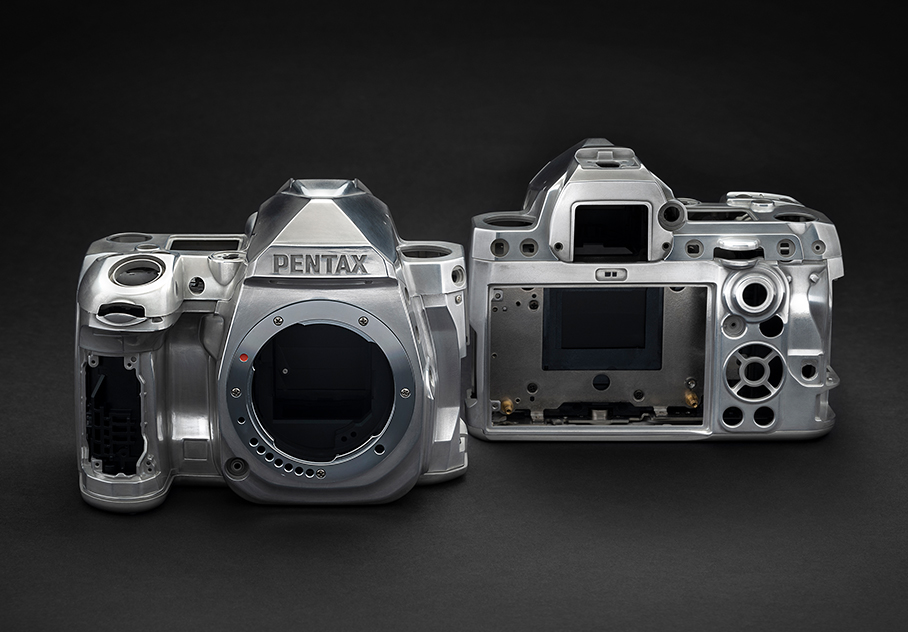
Dustproof, weather-resistant construction
Both the camera body and the optional D-BG8 Battery Grip are designed to be dustproof and weather-resistant to prevent the intrusion of dust and water. When an AW- or WR-series lens is mounted,* they form a highly airtight imaging system that assures dependable performance even in adverse weather conditions.
*AW stands for All Weather; WR stands for Weather Resistant.
Excellent cold-resistant performance down to -10°C
Anticipating use in low-temperature locations, PENTAX has subjected the camera to exacting environmental tests at temperatures as low as -10°C*, while assessing the performance of its mechanisms and electronical circuits and measuring the precision of optical components.
*Battery performance declines as the temperature goes down. When shooting in low-temperature environments, the user is advised to carry spare batteries and keep them warm by storing them in an inside pocket.
Highly durable shutter unit
Installed in the camera body, the extra-durable shutter unit withstands a total of 300,000 shutter release actions at a speed of 12 images per second,* contributing to an improvement in continuous shooting speed and an increase in the number of recordable images.
*Measured under RICOH in-house testing standards.
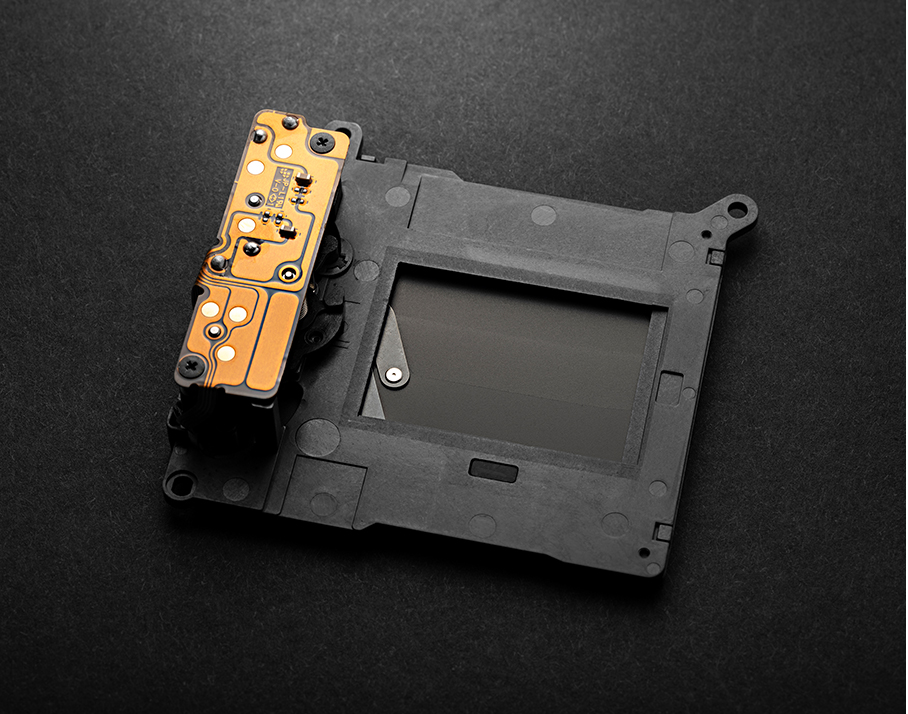
Dual SD-card slot
The PENTAX K-3 Mark III provides a pair of SD card slots. One of the slot conform to the UHS-II standard for high-speed data writing operation. You can save data files on two separate memory cards, with a choice of recording modes: Sequential, Duplicate and RAW/JPEG Separation. You can also copy images for transfer between the two cards.
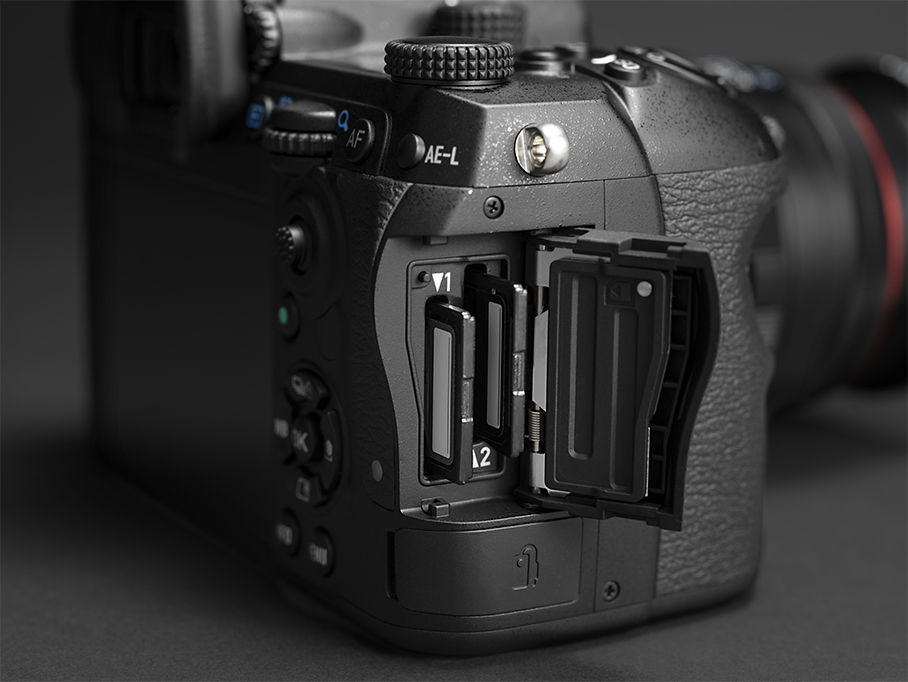
DR II (Dust Removal II) mechanism
By applying ultrasonic vibrations generated by a piezoelectric element to the optical glass plate in front of the image sensor, this mechanism effectively removes dust particles from the image sensor surface, and prevents annoying dust spots from appearing on captured images.
Outdoor-friendly monitor with the Night Vision Display function
The camera features an outdoor-friendly LCD monitor whose brightness level can be easily adjusted to the desired level: make it brighter during outdoor shooting in sunshine, or dimmer during nighttime photography. This monitor also provides a Night Vision Display function, which minimizes eye strain or fatigue after the photographer’s eyes have become accustomed to a dark location during nighttime shooting, such as astronomical photography.
4K movie recording
The PENTAX K-3 Mark III captures 4K-resolution movie clips (3840 x 2160 pixels; 30 or 24 frames per second). The camera’s touch-screen panel makes it easy to select movie-recording functions and exposure settings, while the SR II mechanism provides its shake-compensation effect for movie recording.
Wireless LAN
By installing the dedicated Image Sync application* in your mobile device, you can use a variety of wireless LAN functions, including transfer of images captured by the camera (an automatic image transfer function is available when the wireless LAN connection is activated) and an automatic resizing function to reduce the image size for transfer. These function make saving and using captured images easier and more flexible. This application also provides remote control of camera functions using your mobile device.

*Image Sync can be downloaded free of charge from the App Store (for iOS) or Google Play™ (for Android™).
*Access the RICOH IMAGING official website or contact a RICOH customer service center for compatible operating systems.
USB recharging system
The camera features a USB Type-C terminal for battery recharging using a USB power charger (standard accessory), personal computer or portable battery. You can also recharge the camera from an electric outlet using the optional K-AC166 AC Adapter.
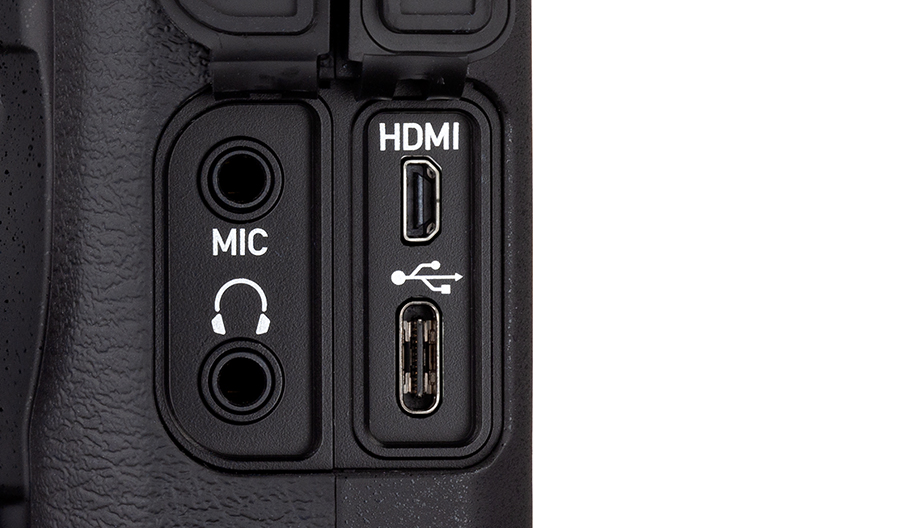
D-BG8 Battery Grip
When installed on the camera body, the optional D-BG8 Battery Grip assures a firmer hold of the camera during vertical-position shooting, while greatly increasing the number of recordable images. You can recharge this battery grip using the camera’s USB terminal, without removing it from the camera. You can even choose the order of recharge between the camera and the battery grip for efficient battery management.
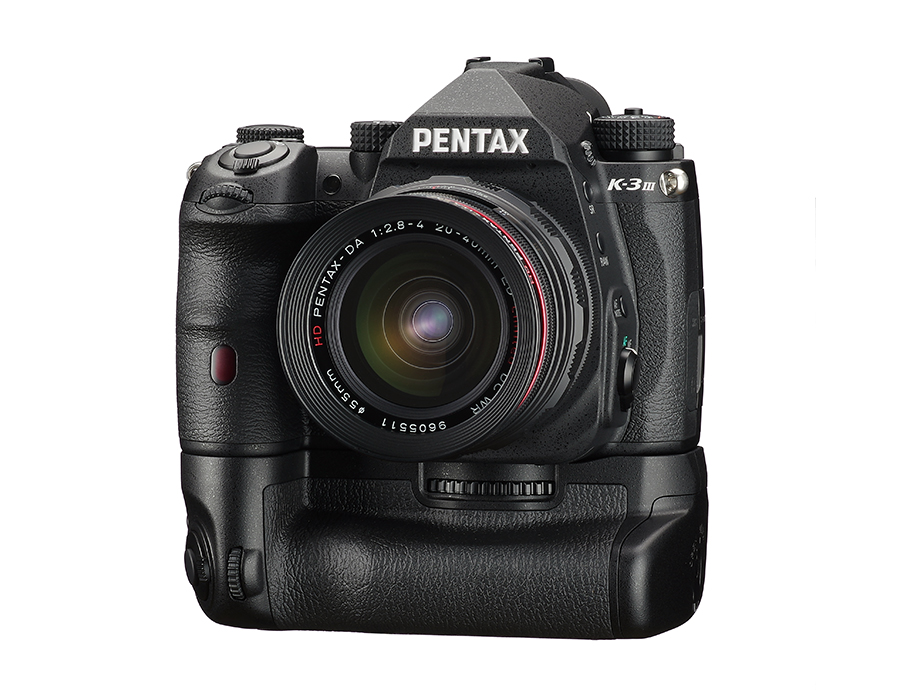
Comfortable vertical-position shooting
The optional D-GB8 Battery Grip features a Smart Function button, Smart Function dial and AF point selector lever identical to those of the camera body, making vertical-position operation just as comfortable as a horizontal-position setup. It also features the same dustproof, weather-resistant construction as the camera itself, assuring outstanding, environment-resisting performance.
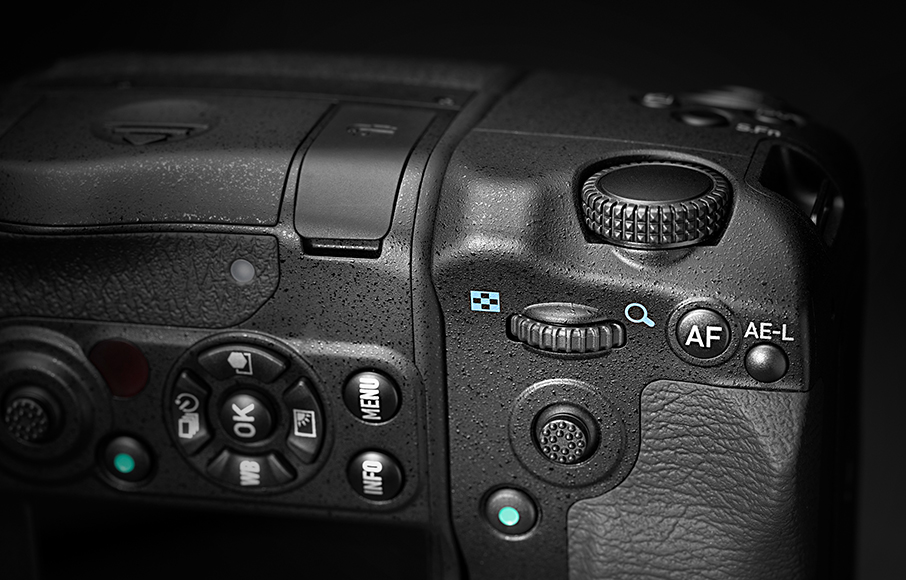
Digital Camera Utility™ 5
Included in the product package, this software lets you develop RAW-format images, and also save, edit and organize images recorded in JPEG or TIFF format. Supported by the acclaimed SILKYPIX® image development engine, it provides high-speed RAW-data development and a range of image-editing tools to apply desired finishing touches to captured images.
A selection of functions to expand your photographic creativity
ASTROTRACER
With the optional O-GPS1 GPS Unit mounted,* the PENTAX K-3 Mark III captures beautiful images of celestial bodies without the need for an equatorial platform. Based on the data obtained by the GPS unit, it calculates the movement of celestial bodies with great accuracy, then shifts the image sensor in synchronization with their motion. Since it captures stars without a streaking effect even during extended exposures, you can record faint stars as sharp points.
*The GPS unit must be calibrated before shooting. Click here or consult the operating manual for specific calibration steps.
Depth-of-field Bracketing and Motion Bracketing
By automatically shifting the aperture and shutter-speed settings, these creative tools produce a set of three images with a different level of bokeh or motion effects.
Clarity Control and Skin Tone Correction
The Clarity Control function lets you control subject texture or image clarity by effectively adjusting the smoothness of the subject’s surface. For instance, it emphasizes the glossy texture of metals, or the transparency of a crystal-clear sky or splashing water.
The Skin Tone Correction function automatically recreates the natural texture and healthy tone of the subject’s skin, without affecting high-resolution images of the hair and clothes or the background.
HDR (High Dynamic Range)
For a scene with extreme highlights and shadows, the camera produces a single composite image without any washed-out or pitch-black areas. Since the camera retains captured images as a single RAW-format file, you can choose the degree of the HDR effect, or turn this function off, during the development of RAW-format images.
Multiple exposure
The camera’s Multi-exposure mode creates a single composite image from multiple images, while you select the desired synthesis mode from Average, Additive and Comparative Brightness.
Interval Shooting and Interval Composite
The Interval Shooting function automatically captures a number of images at a user-selected interval. The Interval Composite function is a creative tool that synthesizes multiple images captured by the Interval Shooting function into a single composite image.
A range of image-editing tools
The PENTAX K-3 Mark III features a variety of convenient creative tools to edit captured images, including: Composition Adjustment for flexible trimming of an image (with a choice of an aspect ratio and the adjustment of the image’s tilt); Level Correction; and White Balance Control.
The camera also provides a choice of 18 digital filters (or 11 filters during shooting) to add a unique visual effect to a captured image. You can apply as many as seven filters to a single image.
AF customization
With the PENTAX K-3 Mark III, you can select the desired set of AF modes and functions based on the subject’s motion, or the prevailing photographic conditions.
Auto Horizon Correction and Composition Adjustment
Taking advantage of the SR mechanism, the camera provides the Auto Horizon Correction function to automatically compensate for the image’s horizontal tilt, and the Fine Composition Adjustment function to correct slight tilts — horizontally, vertically and in rotational directions.
Lens Correction
In addition to compensating for distortion, vignetting at the edges, and lateral chromatic aberration caused by specific lens properties, the PENTAX K-3 Mark III compensates for the drop in resolving power caused by diffraction, which results from capturing an image at closed-down aperture.
In-body RAW data development
The PENTAX K-3 Mark III provides in-body development of RAW-format image files, and saves them as separate JPEG- or TIFF- files. You can add a desired visual effect or finishing touch to a captured image by compensating for lens properties, adjusting white balance and controlling various parameters of the Custom Image modes.
Other noteworthy features:
• Live View (LV) shooting functions
• ±5EV exposure compensation
• Digital Level
A line-up of APS-C-exclusive lenses
PENTAX provides a wide selection of interchangeable lenses exclusively designed for APS-C-format cameras, including: the Limited series, which demonstrates the lens designer’s sensibilities unaccountable by numerical values and captures a true-to-life ambience; and the Star (★) series, which is developed through the pursuit of ultimate optical performance, and with a goal to captivate the photographer by delivering breathtaking image rendition. Unrivalled in operability and portability, PENTAX lenses come in many types —from ultra-wide angle to super telephoto — to meet every demand made by photographers.
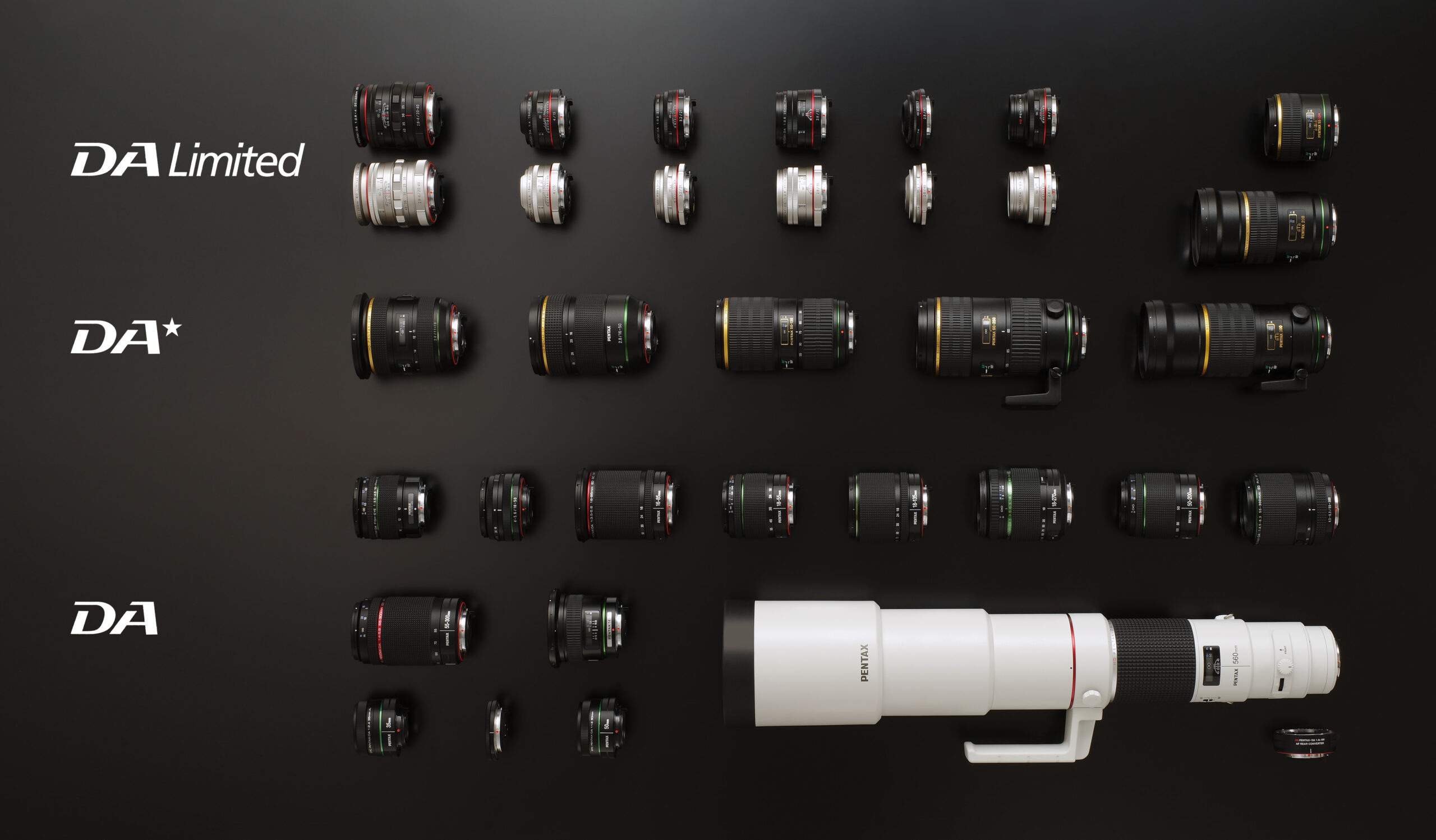

| Model Description | |
| Type | TTL autofocus, auto-exposure SLR digital-still camera |
| Lens Mount | PENTAX KAF2 bayonet mount (AF coupler, lens information contacts, K-mount with power contacts) |
| Compatible Lens | KAF4, KAF3, KAF2 (power zoom compatible), KAF, KA mount lens |
| Image capture unit | |
| Image Sensor | Primary color filter, CMOS. Size: 23.3 x 15.5 (mm) |
| Effective Pixels | Approx. 25.73 megapixels |
| Total Pixels | Approx. 26.78 megapixels |
| Dust Removal | Image sensor cleaning using ultrasonic vibrations “DR II” |
| Sensitivity (Staclass=”content” ndard output) |
ISO AUTO/100 to 1600000 (EV steps can be set to 1EV, 1/2EV or 1/3EV) |
| Image Stabilizer | Sensor-shift shake reduction “SR II”(5-axis), Auto/Panning/Off |
| AA Filter Simulator | Moiré reduction using SR unit. OFF/Low/High/Bracketing (2 images)/Bracketing (3 images) |
| File formats | |
| File format | RAW (PEF/DNG), JPEG (Exif 2.3), DCF2.0 compliant |
| Recorded Pixels | JPEG:L(26M:6192×4128)、M(15M:4752×3168)、S(9M:3648×2432)、XS(2M:1920×1280) RAW:(26M:6192×4128) |
| Quality Level | RAW (14bit): PEF, DNG JPEG: ★★★ (Best), ★★ (Better), ★ (Good), RAW + JPEG simultaneous capturing available |
| Color Space | sRGB, AdobeRGB |
| Storage Medium | SD, SDHC and SDXC Memory Cards * UHS-1/UHS-II compatible (UHS-II is only available for the memory card inserted in the SD1 slot.) |
| Dual SD slot | Sequential Use, Save to Both, Separate RAW/JPG, Image copy between slots possible |
| Storage Folder | Folder Name: Date (100_1018,101_1019…) or User assigned folder name (Default “PENTX”) |
| Recording File | File Name: “IMGP****” or User assigned file name File name numbering: Sequential, Reset |
| Viewfinder | |
| Type | Pentaprism Finder |
| Coverage (FOV) | Approx. 100% |
| Magnification | Approx. 1.05x (FA 50mmF1.4 at infinity) |
| Eye-Relief Length | Approx. 20.5mm (from the view window), Approx. 22.0mm (from the center of lens) |
| Diopter adjustment | Approx. -4.0m to + 1.0m-1 |
| Focusing Screen | Natural-Bright-Matte III focusing screen |
| Viewfinder Overlay | AF Points, Grid Display, Electronic Level, AF Frame, Spot Metering Frame, Crop, Smart Function, Operation Control Lock |
| Live view | |
| Type | TTL method using image sensor |
| Focusing Mechanism | Contrast detection (Auto Area, Zone Select, Tracking, Select(L/M/S), Spot) |
| Functions | Focus Peaking, Face detection, Touch AF |
| Display | Field of View approx. 100%, Magnified view (up to 16x), Grid Display (4×4 Grid, Golden Section, Scale, Square(L), Square(S), Grid Color: Black/Gray/White), Histogram, Bright area warning, Composition Adjustment |
| LCD monitor | |
| Type | Wide viewing angle TFT color LCD, Air-gapless glass |
| Size | 3.2 inch (aspect ratio 3:2) |
| Dots | Approx. 1620K dots |
| Touch Screen | Capacitive sensing method |
| Adjustment | Brightness, Saturation and Colors adjustable |
| Outdoor View Setting | Adjustable ±2 step |
| Night Vision LCD Display | ON/OFF |
| White Balance | |
| Type | Method using a combination of the image sensor and the RGBIr sensor |
| White Balance | AUTO WB, Multi Auto WB, Daylight, Shade, Cloudy, Fluorescent Light (D:Daylight Color, N:Daylight White, W:Cool White, L:Warm White), Tungsten Light, CTE, Manual WB (up to 3 settings), Color Temperature Configuration (up to 3 settings), Copying the white balance setting of a captured image |
| Fine Adjustment | Adjustable ±14 steps on A-B axis or G-M axis |
| Autofocus System | |
| Type | TTL: Phase-matching autofocus |
| Focus Sensor | SAFOX 13, 101 point (25 cross type focus points) |
| Brightness Range | EV-4 to 18 (ISO 100 / at normal temperature) *-4 EV is only available for AF points that support F2.8 light flux when an F2.8-light-flux compatible lens is attached. |
| AF mode | Single AF (AF.S), Continuous AF (AF.C) |
| AF Point Selection | Auto Area, Zone Select, Select, Expanded Area (S, M, L), Select(S), Spot |
| AF Assist Light | Dedicated LED AF assist light |
| Metering | |
| Type | TTL open aperture metering using 307K pixel RGBIr sensor, Multi-segment, Center-weighted, Spot and Highlight-weighted |
| Metering Range | EV-3 to 20 (ISO100 at 50mm F1.4) |
| Exposure Mode | Scene Analyze Auto, Program, Sensitivity Priority, Shutter Priority, Aperture Priority, Shutter & Aperture Priority, Manual, Bulb, Flash X-sync Speed, USER1, USER2, USER3, USER4, USER5 |
| EV Compensation | ±5EV (1/2EV steps or 1/3EV steps can be selected) |
| AE Lock | Button type (timer type: two times the meter operating time set in Custom Setting); Continuous as long as the shutter button is halfway pressed |
| Shutter | |
| Type | Electronically controlled vertical-run focal plane shutter * Electronic shutter when using Pixel Shift Resolution |
| Shutter Speed | Auto:1/8000 to 30 sec., Manual:1/8000 to 30 sec. (1/3EV steps or 1/2EV steps), Bulb (Timed exposure setting possible from 1 sec. to 20min.) |
| Drive modes | |
| Mode Selection | Single Frame, Continuous (H, M, L), Bracketing (2, 3 or 5 frames), Depth of Field Bracketing, Motion Bracketing, Mirror-up, Multi-Exposure (Average/Additive/Bright), Interval Shooting, Interval Composite |
| Self-timer | 12s, 2s |
| Remote Control | 0s, 3s |
| Continuous Shooting | Max. approx. 12 fps, JPEG ( L: ★★★ at Continuous H): up to approx. 37 frames, RAW: up to approx. 32 frames, RAW+: up to approx. 30 frames Max. approx. 7.0 fps, JPEG L: ★★★ at Continuous M): up to approx. 60 frames, RAW: up to approx. 37 frames, RAW+: up to approx. 33 frames Max. approx. 2.5 fps, JPEG ( L: ★★★ at Continuous L): up to approx. 90 frames, RAW: up to approx. 39 frames, RAW+: up to approx. 37 frames * The number of images captured in the continuous shooting mode is an approximate figure, tested at a sensitivity of ISO 100. The number may vary depending on the type of memory card used and/or the photographic conditions. * The continuous shooting speed may decrease depending on the type of lens used and/or the aperture, shutter speed and sensitivity selected by the user. * A certain amount of time is required for the playback of images captured in the continuous shooting mode. The time required may vary depending on the number of captured images and/or the recording format. |
| External Flash | |
| Flash Modes | Auto Flash Discharge, Auto Flash + Red-eye Reduction, Flash On, Flash On + Red-eye Reduction, Slow-speed Sync, Slow-speed Sync + Red-eye, P-TTL, Contrast-control-sync, High-speed sync, Wireless sync * Contrast-control-sync and High-speed sync requires 2 or more dedicated external flash |
| Sync Speed | 1/200sec. |
| Flash Exposure Compensation | -2.0~+1.0EV |
| Capture Settings | |
| Custom Image | Auto Select, Bright, Natural, Portrait, Landscape, Vibrant, Radiant, Muted, Flat, Bleach Bypass, Reversal Film, Monochrome, Cross Processing |
| Cross Process | Random, Preset 1-3, Favorite 1-3 |
| Digital Filter | Extract Color, Replace Color, Toy Camera, Retro, High Contrast, Shading, Invert Color, Unicolor Bold, Tone Expansion, Bold Monochrome, Grainy Monochrome |
| Clarity | Adjustable ±4 step |
| Skin Tone | Type1/Type2 |
| HDR | Auto, HDR1, HDR2, HDR3, Advanced HDR, Exposure bracket value adjustable, Automatic composition correction function |
| Pixel Shift Resolution | Available, Motion Correction On/Off |
| Lens Correction | Distortion Correction, Peripheral Illumin. Correction, Lateral Chromatic Aberration Correction, Diffraction Correction |
| D-Range Correction | Highlight Correction, Shadow Correction |
| Noise Reduction | Slow Shutter Speed NR, High-ISO Noise Reduction |
| Horizon Correction | SR On: correction up to 1 degree, SR Off: correction up to 2 degrees |
| Composition Adjustment | Adjustment range of ±1.5mm up, down, left or right (±1mm when rotated); Rotating range of ±1 degree |
| Electronic Level | Displayed in viewfinder (Horizontal and vertical); Displayed on LCD monitor (Horizontal and vertical) |
| Program Line | AUTO, Normal, Hi-speed Priority, DOF Priority (Deep), DOF Priority (Shallow), MTF Priority |
| Movie | |
| File Format | MPEG-4 AVC/H.264(MOV) |
| Recorded Pixels | 4K (3840×2160, 30p/24p) Full HD (1920×1080, 60p/30p/24p) |
| Sound | Built-in stereo microphone, external microphone (Stereo recording compatible) Recording Sound Level adjustable, Wind Noise Reduction |
| Recording Time | Up to 25 minutes or 4GB; automatically stops recording if the internal temperature of the camera becomes high. |
| White Balance | AUTO WB, Daylight, Shade, Cloudy, Fluorescent Light (D:Daylight Color, N:Daylight White, W:Cool White, L:Warm White), Tungsten Light, CTE, Manual WB (up to 3 settings), Color Temperature Configuration (up to 3 settings), Copying the white balance setting of a captured image |
| Custom Images | Auto Select, Bright, Natural, Portrait, Landscape, Vibrant, Radiant, Muted, Flat, Bleach Bypass, Reversal Film, Monochrome, Cross Processing |
| Cross Processing | Random, Preset 1-3, Favorite 1-3. |
| Digital Filter | Extract Color, Replace Color, Retro, High Contrast, Invert Color, Unicolor Bold, Bold Monochrome |
| Playback | |
| Playback View | Single frame, Multi-image display (20, 48, 70 segmentation), Display magnification (up to 16, 100% display, quick zoom and Focus Magnification available), Grid display (4×4 Grid, Golden Section, Scale, Square(L), Square(S), Grid Color: Black/Gray/White), Rotating, Histogram (Y histogram, RGB histogram), Bright area warning, Auto Image Rotation, Detailed information, Copyright Information (Photographer, Copyright holder), GPS information (latitude, longitude, altitude, Coordinated Universal Time) , Orientation, Folder Display, Calendar Filmstrip Display |
| Delete | Single image, All images, Selected images, Folder, Images on the selected shooting date, Instant review image |
| Digital Filter | Base Parameter Adj, Extract Color, Replace Color, Toy Camera, Retro, High Contrast, Shading, Invert Color, Unicolor Bold, Tone Expansion, Bold Monochrome, Grainy Monochrome, Miniature, Soft, Fish-eye, Slim, Monochrome, Frame Composite |
| RAW Development | RAW file select: Select Single Image, Select Multiple Images, Select a folder, Select a shooting date RAW Development Parameter: White Balance, Custom Image, Sensitivity, Digital filter, Clarity, Skin Tone, HDR, Pixel Shift Resolution, Distortion Correction, Peripheral Illumin. Corr., Lateral Chromatic Aberration Correction, Diffraction Correction, Color Fringe Correction, High-ISO Noise Reduction, Shadow Correction, File Format (JPEG/TIFF), JPEG Recorded Pixels, JPEG Quality, Aspect Ratio, Color Space |
| Edit | Protect, Image Rotation, Image Copy, File Transfer, Save RAW Data in buffer memory, Resize, Cropping (Aspect ratio and Slant adjustment available), Levels Adjustment, WB Adjustment, Color Moiré Correction, Movie Edit (Divide or delete selected frames), Capturing a JPEG still picture from a movie |
| Customization | |
| Settings | USER Mode, Fx Button, AF/AE Lock Settings, Preview Dial, E-Dial Programming, Smart Function, Monitor Touch Operation, Eye Sensor, Viewfinder Display, LCD Panel, Monitor Display, Instant Review, Zoom Review, Warning Display, Control Panel, Memory, EV Steps, ISO Sensitivity Steps, Color Temperature Steps, Input MF Lens Focal Length, Save Rotation Information, Aperture Information Record, AF Fine Adjustment, Copyright Information |
| Language | English, French, German, Spanish, Portuguese, Italian, Dutch, Danish, Swedish, Finnish, Polish, Czech, Hungarian, Turkish, Greek, Russian, Thai, Korean, Traditional Chinese, Simplified Chinese, Japanese |
| Power supply | |
| Battery Type | Rechargeable Lithium-ion Battery D-LI90 |
| AC Adapter | AC Adapter Kit K-AC166(Optional) |
| Battery Life | Number of recordable images: Approx. 800 images Playback time: Approx. 250 minutes * With a fully recharged Rechargeable Lithium-ion Battery. Tested in compliance with CIPA standard. Actual results may vary depending on the shooting condition. |
| Interfaces | |
| Connection Port | USB Terminal (USB Type-C), External cable switch terminal (2.5mm diameter), X-sync socket, HDMI output terminal (Type D), Stereo microphone input terminal, Headphone terminal |
| USB Connection | USB 3.2 Gen1, Data Transfer: MTP/CD-ROM, Battery Recharge/Power Supply (Optional AC Adapter required) |
| Wireless LAN | |
| Standards | IEEE 802.11b/g/n |
| Frequency (Center Frequency) | 2412MHz~2462MHz (1ch~11ch) |
| Security | Authentication: WPA2, Encryption: AES |
| Bluetooth | |
| Standards | Bluetooth® v4.2 (Bluetooth Low Energy) |
| Frequency (Center Frequency) | 2402MHz~2480MHz (CH0~CH39) |
| Dimensions and Weight | |
| Dimensions | Approx. 134.5mm (W) x103.5mm (H) x 73.5mm (D) (excluding protrusions) |
| Weight | Approx. 820g (Including dedicated battery and SD Memory Card), Approx. 735g (body only) |
| Operating Environment | |
| Temperature | -10°C~40°C (14°F~104°F) |
| Humidity | 85% or less (no condensation) |
| Accessories | |
| Included | Strap O-ST162, ME Viewfinder Cap, Rechargeable Lithium-ion Battery D-LI90, USB Power Adapter, Power Plug, USB Cable I-USB166 <Mounted to the camera> Eyecup FU, Hot shoe cover FK, Sync socket 2p cap, Body mount cap KII, Battery Grip terminal cover |
| Software | Digital Camera Utility 5 |
Storage capacity
| Still | |||||||||||||
| JPEG | RAW | ||||||||||||
| Recorded Pixels |
L: 26M | M: 15M | S: 9M | XS: 2M | |||||||||
| 6192×4128 | 4752×3168 | 3648×2432 | 1920×1280 | 6192×4128 | |||||||||
| Quality Level | ★★★ | ★★ | ★ | ★★★ | ★★ | ★ | ★★★ | ★★ | ★ | ★★★ | ★★ | ★ | PEF |
| 8GB | 495 | 1120 | 2190 | 837 | 1872 | 3607 | 1401 | 3105 | 5840 | 4717 | 9812 | 16353 | 141 |
| Movie | |||||
| Recorded Pixels |
4K | Full HD | |||
| 3840×2160 | 1920×1080 | ||||
| 30p | 24p | 60p | 30p | 24p | |
| 8GB | 00:08′39″ | 00:10′46″ | 00:12′17″ | 00:24′09″ | 00:29′56″ |
The maximum file size is 4GB for movie.
The maximum length is 25 minutes for movie.
System Requirements
| Windows | |
| OS | Windows 10(FCU/CU) (32bit/64bit), Windows 8.1 (32bit/64bit) |
| CPU | Intel Core i5 or higher |
| RAM | 8GB or more |
| Free Disk Space | Program installation and start-up: 100 MB or more of available space Image file saving: Approximately 15 MB per file (JPEG) / approximately 50MB (RAW) |
| Monitor | 1280 x 1024 dots, 24 bit full-color or more |
| Macintosh | |
| OS | macOS 11.0 Big Sur, macOS 10.15 Catalina, macOS 10.14 Mojave, macOS 10.13 High Sierra, macOS 10.12 Sierra |
| CPU | Intel Core i5 or higher |
| RAM | 8GB or more |
| Free Disk Space | Program installation and start-up: 100 MB or more of available space Image file saving: Approximately 15 MB per file (JPEG) / approximately 50MB (RAW) |
| Monitor | 1280 x 1024 pixels, 24 bit full-color or more |

-
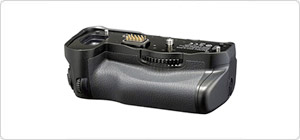
Battery Grip D-BG8
Model No. 37048 -
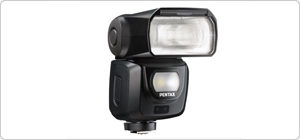
Auto Flash [AF540FGZ II] Weather Resistant
Model No. 30456 -
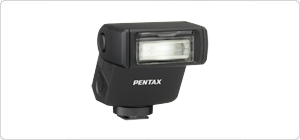
Auto flash [AF201FG]
Model No. 30458 -
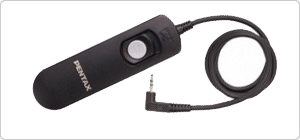
Cable Switch CS-205 Cable Switch CS-205
Model No. 37248 -

Waterproof Remote Control O-RC1
Model No. 39892 -
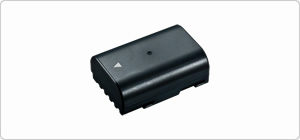
Rechargeable L-ION Battery D-LI90(E)
Model No. 39993 -
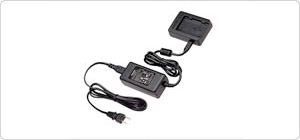
Battery Charger Kit K-BC177
Model No. 37874 -
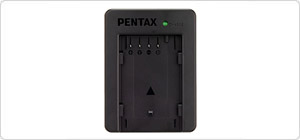
Battery Charger D-BC177
Model No. 37871 -
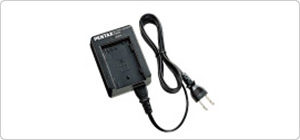
Battery Charger Kit K-BC90U
Model No. 39835 -
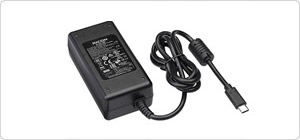
AC Adapter Kit K-AC166
Model No. 38372 -
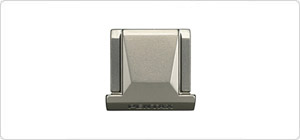
Hot Shoe Cover O-HC177
Model No. 31081 -
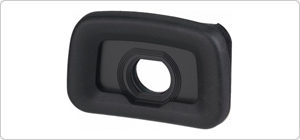
Magnifying Eyecup O-ME53
Model No. 30150

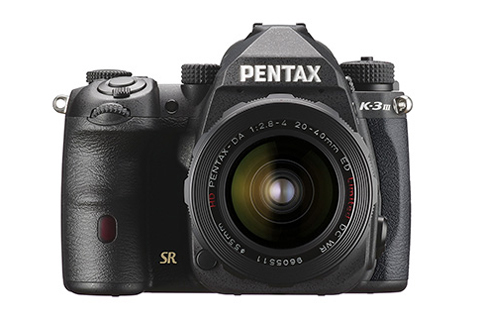
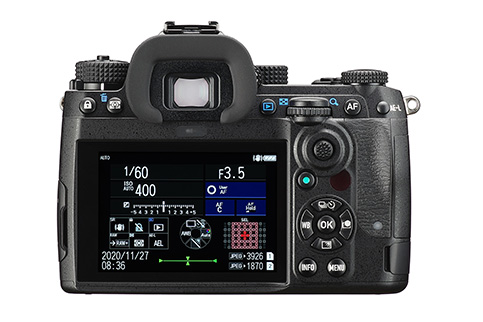
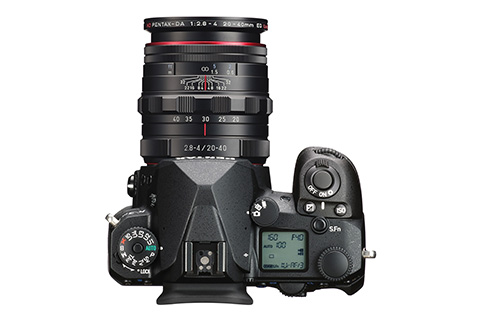
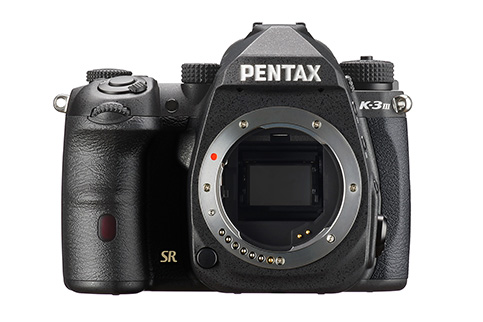
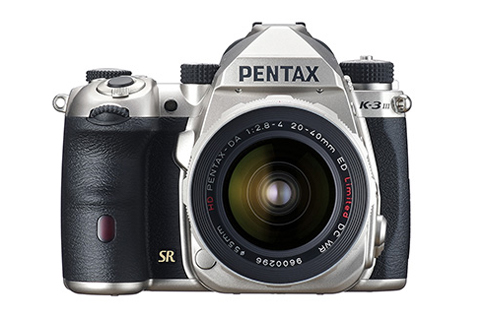
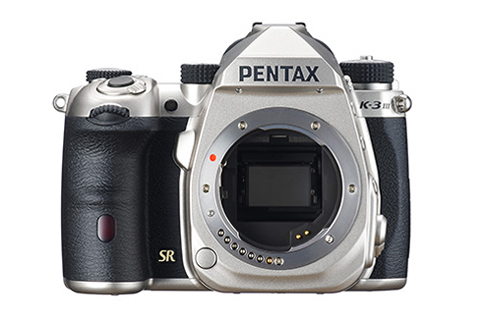
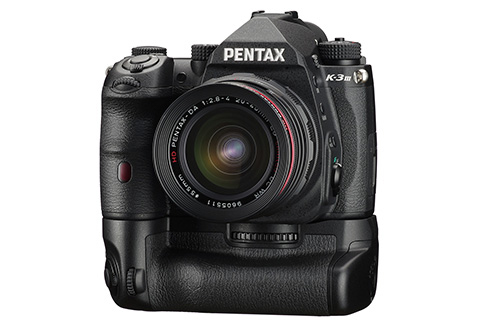
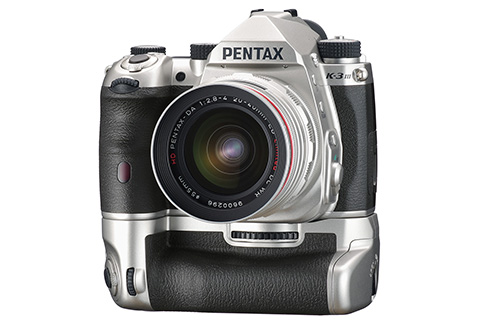
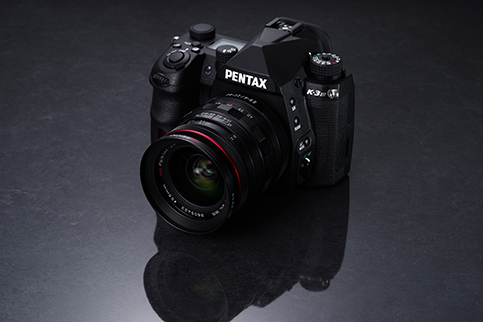
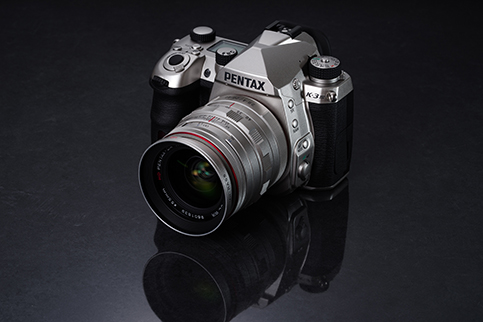
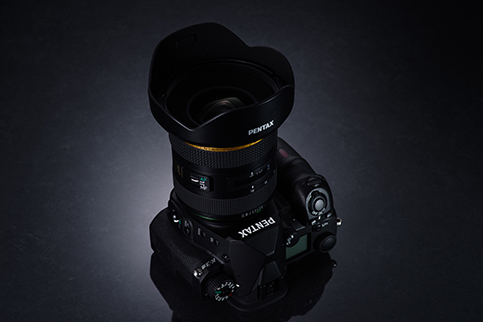
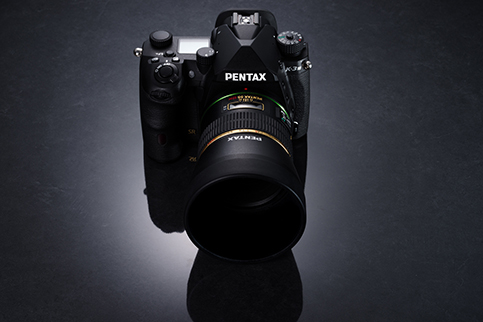
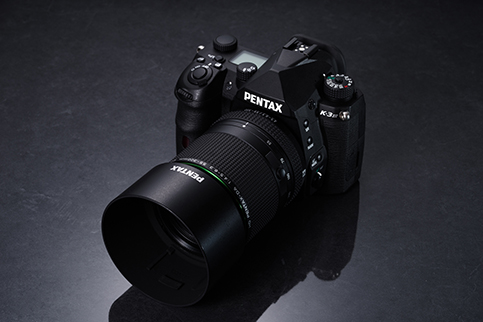
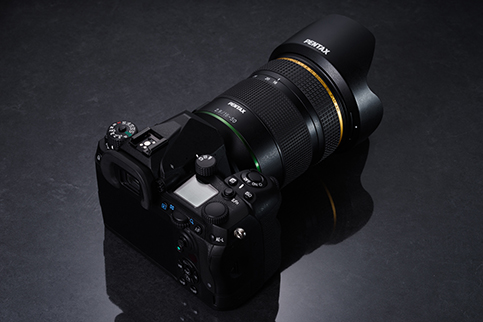
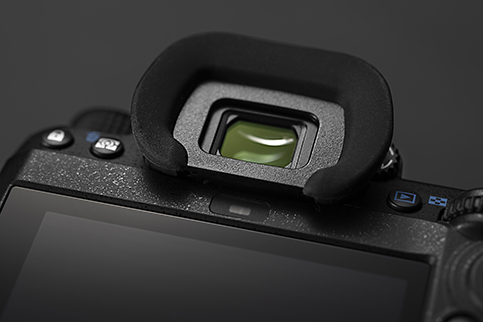
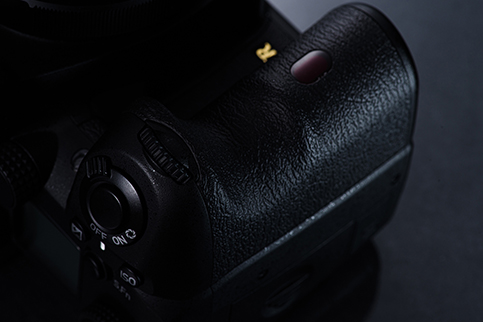
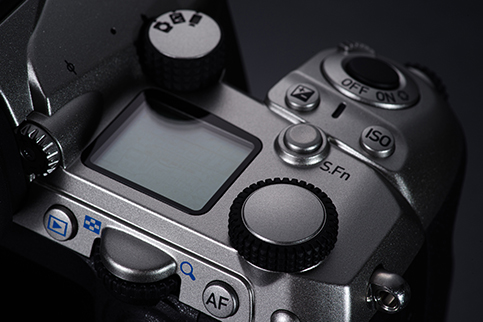
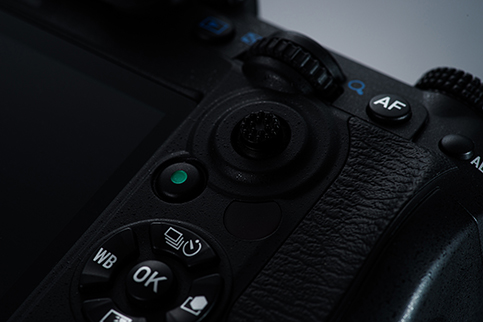
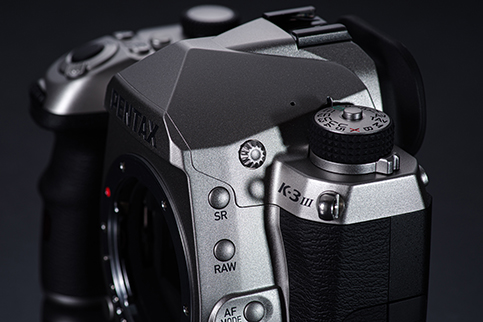
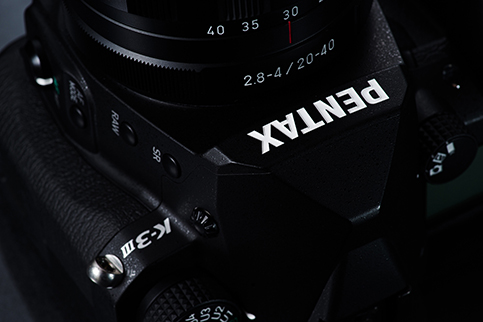
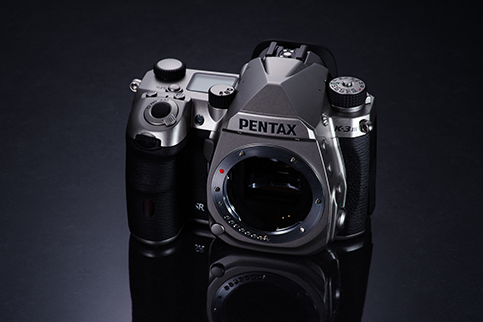

Box Contents:
K-3 Mark III Body
Rechargeable Li-Ion Battery D-LI90(E)
USB Power Adapter AC-U2
Power Plug
USB Cable I-USB166
Finder Cap ME
Strap O-ST162
Eyecup
Hot shoe Cover FK
Body Mount Cap KII
Synchro Terminal 2P Cap


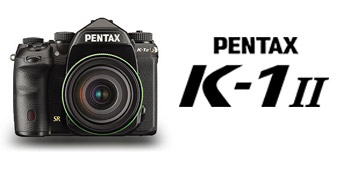
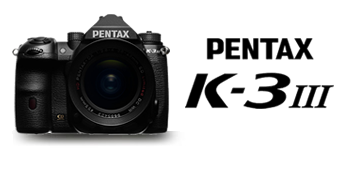
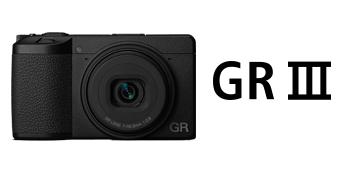
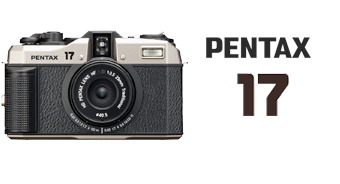
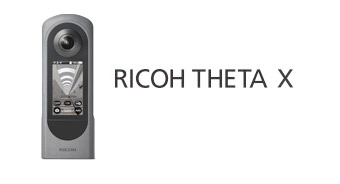
 Cameras
Cameras Lenses
Lenses Camera Accessories
Camera Accessories Sport Optics
Sport Optics




